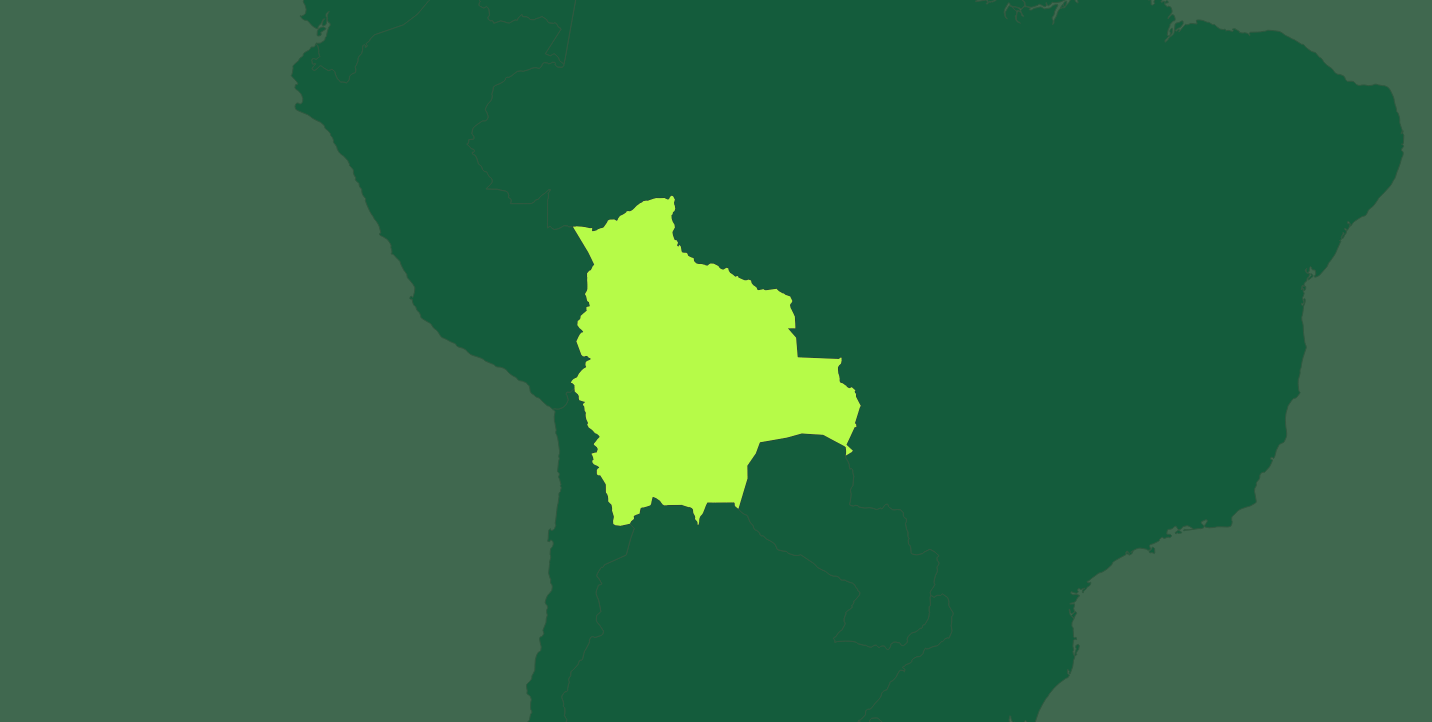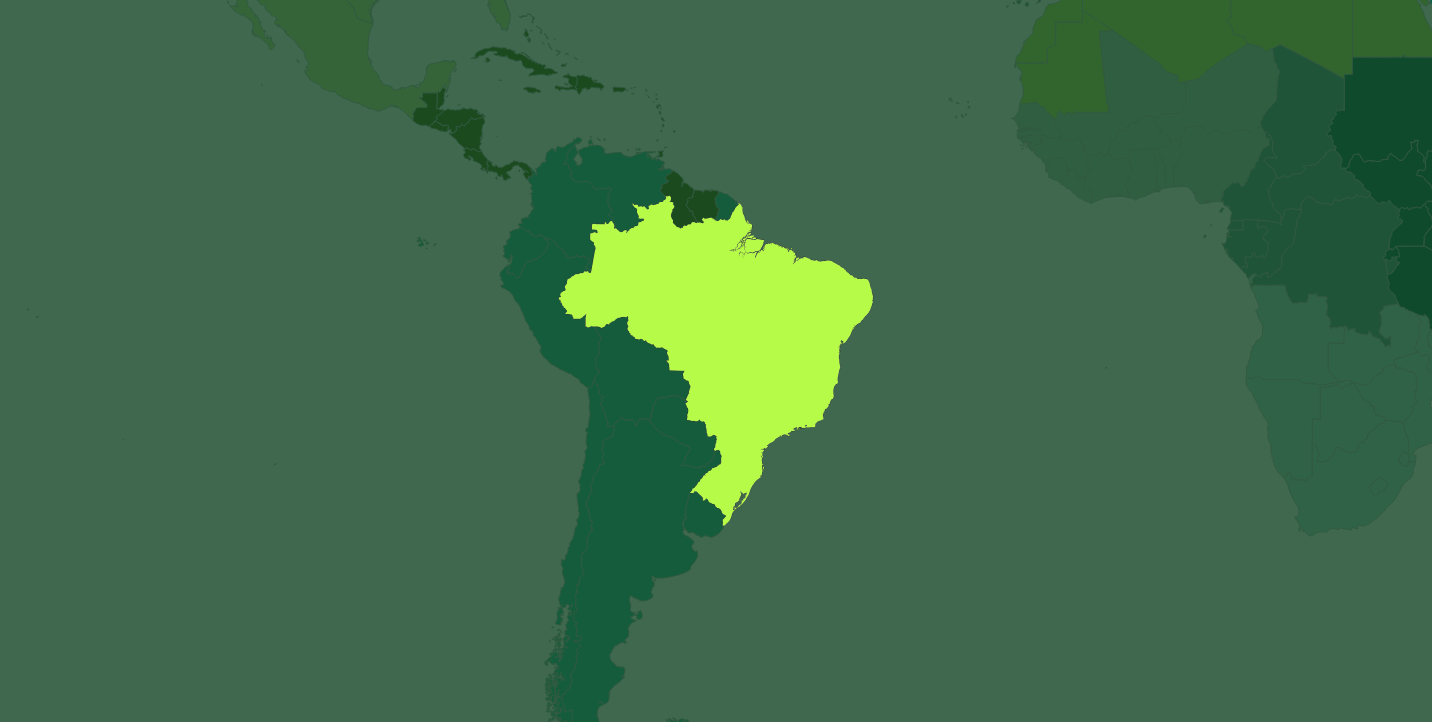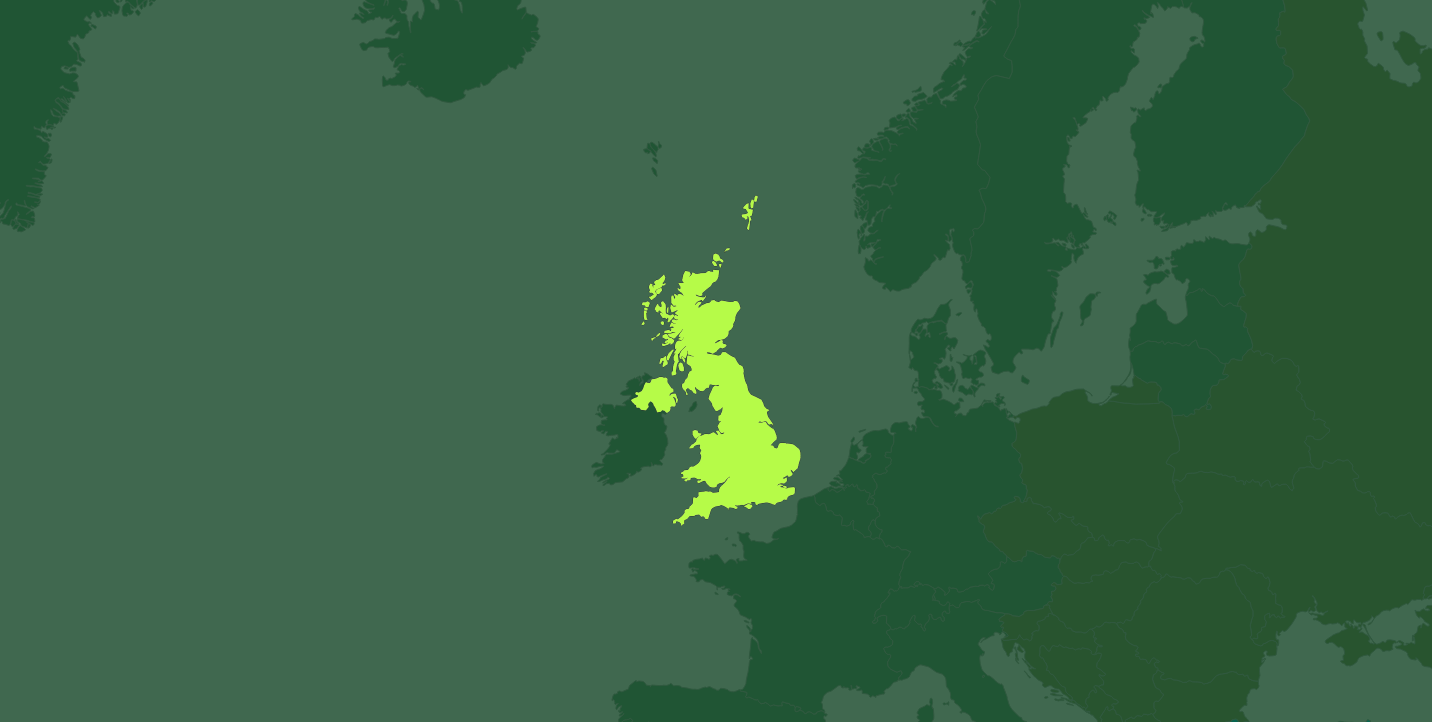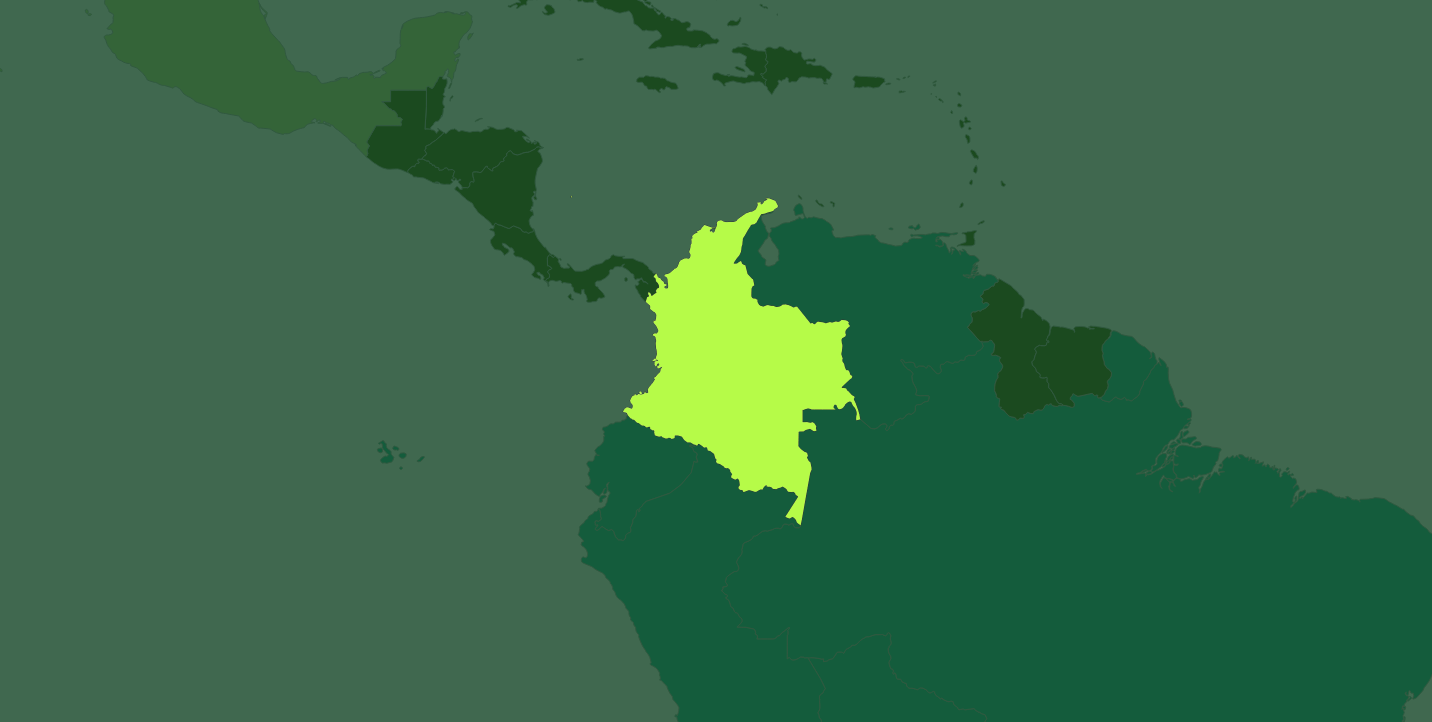Afro-Descendants: A Global Picture
Asia
- 01

Introduction
by Shihan de Silva History For centuries, Asia has been home to a rich variety of Afro-descendant communities who are still based in large numbers across the region. However, multiple waves of migration over centuries, indigenization and lost…
0 min read
- 02
Afro-Sri Lankans and their emergence from invisibility
by Shihan de Silva Ethiopians sailed on their own accord to Sri Lanka to trade in Mannar, in the north of the country. Ibn Batuta, the Moroccan traveller, noted in the fourteenth century that around 500 Abyssinians served in the garrison of…
4 min read
- 03
Pakistan’s Sheedis struggle to end centuries of discrimination
by Alice Albinia Sheedis are a community based in southern Pakistan, the descendants of East Africans brought to this area as slaves between the eighth and nineteenth centuries by Arab merchants. Most are Muslims and believe their lineage can…
0 min read
- 04
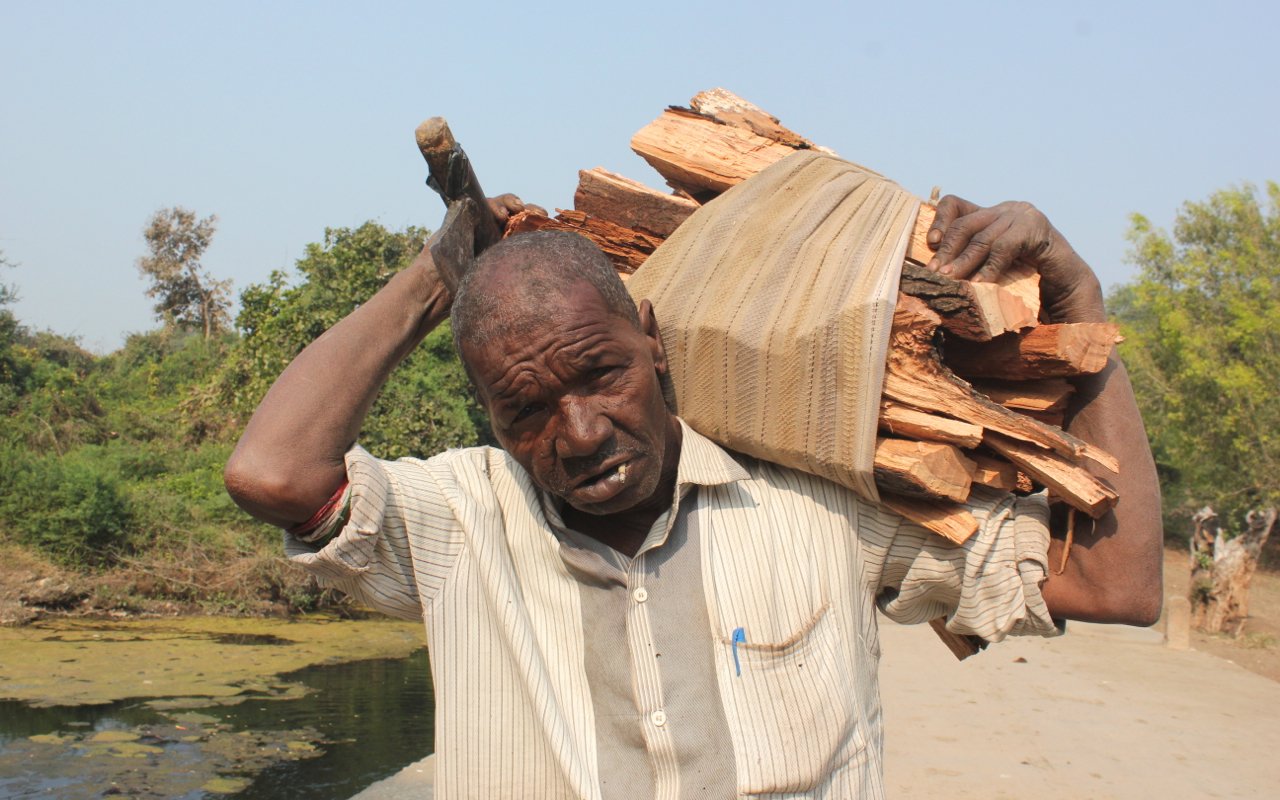
The Siddi community of Karnataka
by Mohan Siddi The Siddi are a community consisting of tribes scattered across the country but concentrated mainly in Karnataka, Gujarat, Maharashtra and Andhra Pradesh. Very few Siddi families live in other parts of the country. Siddi…
0 min read
- 05

Interview with Mohan Ganapti Siddi – a young community activist advocating for change
India’s Siddi are a large Afro-descendant community with an estimated 150,000 members in the country, based for centuries in rural areas of Goa, Karnataka, Maharashtra, Andhra Pradesh and Gujarat. Despite their long history, Siddi have…
0 min read
- 06
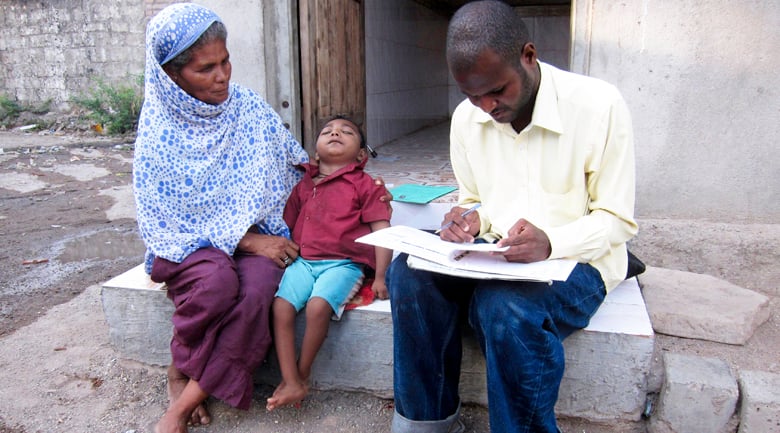
The Siddi of Karnataka
The Siddi of Karnataka are descended from runaways and those released from bondage in Goa and neighbouring states. In many villages they appear to have been the original settlers. They braved the beasts – snakes and tigers – and deadly…
0 min read
-
by Shihan de Silva
History
For centuries, Asia has been home to a rich variety of Afro-descendant communities who are still based in large numbers across the region. However, multiple waves of migration over centuries, indigenization and lost histories have meant that self-identification is often complex, particularly due to the different patterns of movement that led to the creation of each community. This situation has been reinforced by the historic marginalization experienced by Afro-descendant populations.
The long duration of easterly movement from the African coast inevitably led to several streams of migration, involving various points of origin and destination. Among the earliest arrivals from Africa were free Ethiopians, who in the fifth century sailed to Mannar, on Sri Lanka’s north-western coast, and engaged in trading activities when the island was an emporium in the Indian Ocean. Sheedis, descendants of East Africans brought to the area as slaves, also settled on the shores of the Sindh in what is now south-west Pakistan from the early seventh century onwards, with many still residing there today.
However, free movement over land and across the ocean to Asia, besides being propelled by commerce and religion, was also a product of forced migration and the slave trade. The latter substantially increased the population flow from Africa, particularly to South Asia, where many were conscripted as soldiers. Elite military slavery in fact led some slaves into positions of power. One of the most notable examples is an Ethiopian child, Chapu (b. 1549) – later renamed Ambar – who was sold to slavery by his impoverished parents, eventually working in India for the Peshwar (Prime Minister) of Ahmednagar. Ambar himself became the Prime Minister of Ahmednagar and his tomb in Khuldabad, Maharashtra state, is testimony to the respect that he commanded.
In the nearby Maldives archipelago, sultans returning from the Hajj brought slaves who were freed on conversion and absorbed into the population which was historically accustomed to migrant settlers. Many Africans were engaged as raveris (coconut plantation keepers) on the islands. The expansion of European commerce, international trade, territorial gain and defence also encouraged the migration of people from Africa, with the Portuguese, Dutch and British imperial powers engaging Africans as soldiers, servants, musicians and builders.
Many African communities distinguished themselves and managed to achieve significant success, including a Sidi dynasty of rulers in what was formerly Janjira state, to the south of Mumbai. Nevertheless, despite their long-standing economic, military and cultural presence in the region, the history of African communities in Asia remains poorly documented. While Africans appear in some sources as soldiers, jockeys, musicians, entertainers, concubines, eunuchs, sailors, servants, palace guards, bodyguards and cooks, most are anonymous and many more go unnoticed due to identification problems. This lack of visibility has contributed to the present marginalization of community members and undermined their sense of identity.
In recent years, continued migration from Africa to various Asian countries has driven the growth of black populations across the region, particularly China, where the economic opportunities available in cities such as Guangzhou have attracted thousands of African residents. Other countries, such as Malaysia, also attract large numbers of African migrants for business or study. Despite increasing diversity across the region, however, many still face similar challenges to those experienced by long-established black communities, including xenophobia and institutional exclusion – both issues that are rooted in centuries of discrimination.
Current situation
Today, Afro-descendant communities are still present across Asia, with tens of thousands concentrated particularly in areas of India, Pakistan and Sri Lanka. The diversity of South Asia makes identification of Afro-descendants problematic, however, and religious conversion, out-marriage and acculturation have served as catalysts in a process of assimilation which has made Afro-descendants less visible.
Out-marriage has contributed to a wider range of features and the loss or dilution of African physiognomy and characteristics, in the process reducing the numbers of recognized community members, as is the case with Afro-Sri Lankans in many areas of Sri Lanka. Nevertheless, in many cases the genetic link is still evident. One DNA study, for example, reported that the Makranis, an Afro-descendant community in western Pakistan, retain strong links to their African origins, mostly Mozambican (Quintana-Murci, L. et al., ‘Where West meets East: The complex mtDNA landscape of the southwest and central Asian corridor’, American Journal of Human Genetics, vol. 74, no. 5, May 2004, pp. 827–45). Given the strategic importance of the Makran coast, which was on the trade route to and from Africa, Arabia, Central Asia and South Asia, it is not surprising that African slaves also travelled on this route.
And the link, as with other communities of African origin across the region, is also reflected in local customs and traditions. Toponyms such as Mombasa Street and Sheedi Village Road in Karachi, for instance, consolidate the African connection with Pakistan. In northern Karachi, local members of the Sheedi community protect the shrine of the Sufi Saint Baba Mango Pir. Celebrations of their annual festival attract other Pakistanis to the shrine.
Sidis also live in Karnataka, Goa and Madhya Pradesh. In Gujarat and Maharashtra they have found a role as spiritual healers and caretakers of shrines dedicated to Sidi and Sufi saints. As such they are accorded dignity and status by Muslim, Hindu and Zoroastrian devotees, who also venerate these saints and visit the shrines. Aspects of their cultural life today are still rooted in African origins. The sacred music of the Sidis, damal, for example, revolves around Bava Gor, an African who came to India around the thirteenth century.
Elsewhere in Asia, a genre of music in the Maldives called Bodu Beru – meaning ‘large drum’ – is associated with African settlers. According to oral history, Bodu Beru is played by the descendants of Sangoaru, an African who lived on the island of Feridu in Ari Atoll. Traditional Bodu Beru is also played on other islands of Ari Atoll and on Felidhoo island (in Vaavu Atoll). Babaru nisun (‘African dance’) accompanies Bodu Beru and singing of lava.
Nevertheless, the legacy of discrimination, social stigmatization and lack of services has meant that many community members today struggle on the margins of society. This contrasts with the relatively high profile enjoyed by some of their ancestors. In Andhra Pradesh, for instance, descendants of the Nizam of Hyderabad’s African Cavalry Guard now live in poverty in an area called AC Guards, with a few working as caretakers of mosques and others in drum bands (known as Daff parties) hired to play music and dance in ‘African ways’ for weddings and other occasions.
Many have been affected by changing political scenarios and fortunes within their countries, though there have also been positive developments. In India, for instance, Sidi communities in Saurashtra (Gujarat state) and Uttara Kannada (Karnataka state) have been accorded ‘Scheduled Tribe’ (ST) status: this entitles them to benefits from the government’s affirmative action schemes available to those recognized as socially and economically marginalized. Nevertheless, other Sidi groups in India also struggle with deep-seated exclusion yet have not been included within these categories – leaving them with little in the way of official support to address their situation. Some Sidi groups are also classified as ‘Other Backward Class’ (OBC), another reservation category.
Many members of Afro-descendant communities find that their ethnicity visibly sets them apart from the majority populations within their countries. Within Asia’s burgeoning cosmopolitan cities, Afro-Asians are considered tourists until they begin to speak in the local Asian language. At the same time, those in villages are isolated among the broader rural population. Lack of resources and extreme marginalization has meant that the sense of a common culture, memory and identity within these communities has been eroded.
Looking forward
The entrenched marginalization experienced by many Afro-descendants across Asia has served to undermine their sense of identity and, by extension, their ability to mobilize together for their rights. Despite these challenges, however, there have been recent signs of stronger collective organization among many communities. With improved communication networks, Afro-Asians are becoming more aware of their ethnic origins and cultural roots.
For example, increased solidarity and empowerment has emerged as a result of initiatives led by Sidis themselves, with the proliferation of Sidi youth organizations and societies across the region indicating the growing strength of their collective consciousness as a distinct community. In many cases these efforts have been driven by the persistence of their unique cultural legacy, giving them a voice and bringing their roots to the fore. In particular, their history is embodied in their rich traditions of music and dance, with memories of lost homelands encapsulated in song. Indo-Portuguese songs of Diu (in Gujarat), for example, refer to Mozambican territory – Inhambane, Sofala, Sena, Macua. Sidi Goma groups also perform their traditional music in India and abroad, though they cannot take part in all the music festivals to which they are invited due to lack of sponsorship.
These cultural memories are strong even though memories of migration are dim. The complex and often difficult history of Afro-descendant communities in Asia reinforces the importance of maintaining and recognizing their knowledge to improve the status of those who otherwise find themselves at best overlooked and at worst oppressed. The emerging renaissance of Afro-descendant culture therefore goes hand in hand with political mobilization, presenting these communities with the hope of better prospects to come.
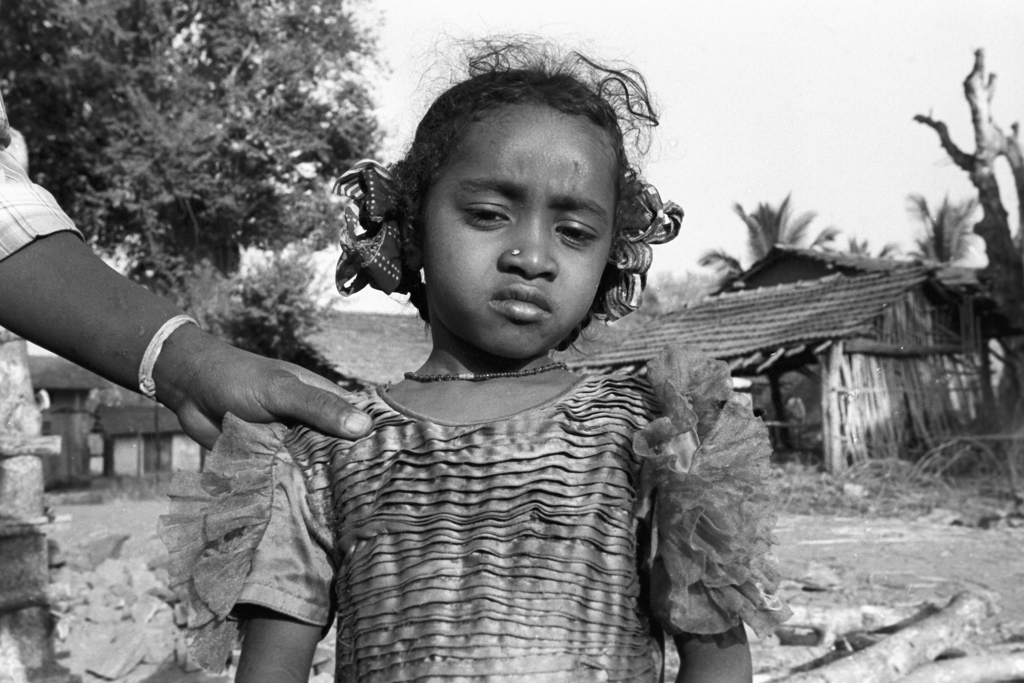
Siddi girl, Kendlgira, India. Photo credit: Andy Martinez. -
by Shihan de Silva
Ethiopians sailed on their own accord to Sri Lanka to trade in Mannar, in the north of the country. Ibn Batuta, the Moroccan traveller, noted in the fourteenth century that around 500 Abyssinians served in the garrison of Jalasti, the ruler of Colombo. From the sixteenth century, the Portuguese, Dutch and British colonial powers brought over Africans as soldiers, servants, road builders, water carriers, construction workers, labourers and postal runners.
The number of descendants of these successive waves of arrivals has dwindled, with the largest community, located in Sirambiyadiya in the North-Western Province, totalling around 50 families. The arrival of their ancestors is associated with the British colonial era. Taking over the central hilly Kandyan kingdom, which had remained independent throughout Portuguese and Dutch rule, was a costly exercise and required good soldiers. The slave trade was a means of acquiring able men who served the British in the 3rd and 4th Ceylon Regiments.
Today, the exact number of self-identifying Afro-Sri Lankans in the country is unknown, as they are not included in official censuses as a separate category – a situation that adds to their lack of visibility. One reason for this is that out-marriage has never been prohibited between ethnic groups in Sri Lanka, meaning that migrant Africans have intermarried freely and blended into the multicultural mosaic of Sri Lanka. Nevertheless, the survival of many distinct traditions among Afro-Sri Lankans has helped ensure the survival of their identity, though the community in Sirambiyadiya struggles to maintain their musical traditions, particularly as out-marriage is increasing their heterogeneity.
Their musical performances are rhythm-driven, energetic and require considerable physical strength to sustain the drum rhythms. The music, which they call manhas, defines their identity. Manhas are an oral tradition, accompanied by dancing and songs composed by their ancestors in the mother-tongue of their forebears, known as Indo-Portuguese of Ceylon: a creolized form of Portuguese. The lyrics are a reflection of how African migrants themselves were transformed in the process of resettling. The themes of the songs are mostly secular, though ‘Senhor San Anthony’ is one of their favourites. Being devout Catholics, they pray together with other ethnic groups in the village church, where mass is conducted twice a month by a priest from St Mary’s Parish Church, Puttalam.
The musicians practise regularly and include children in the sessions in order to ensure continuity of their traditions. While they are invited to perform at events and functions, the frequency of the performances is not sufficient to enhance their livelihoods. They have received help from a local non-governmental organization (NGO) in designing costumes required for theatrical performances, and their presence reaches a wider audience through television broadcasts of these activities. But they need professional marketing advice to promote their talents in order to enhance their incomes.
The community currently live on land gifted to them by the government and in brick houses built for them by an NGO. They utilize their compound to grow fruit and vegetables for their own consumption. The women are engaged in child rearing and housework, though some work as housemaids, attendants and nurses. The men are mostly labourers. Yet their self-esteem has risen with The increased external interest in their community by scholars and the media has helped to strength the community’s own sense of identity.
The Sirambiyadiya Afro-Sri Lankan community has a new role to play on the island. This role is not associated with their ancestors but has become evident in the diaspora. Whatever the reasons behind their strong cultural memories, be it diasporic consciousness or resistance to total assimilation, their cultural heritage should be nurtured and supported. Being a disenfranchised group, their comparative advantage could be strengthened in order to enhance their livelihoods and long-term survival as a community.
-
by Alice Albinia
Sheedis are a community based in southern Pakistan, the descendants of East Africans brought to this area as slaves between the eighth and nineteenth centuries by Arab merchants. Most are Muslims and believe their lineage can be traced back to Hazrat Bilal, the freed Ethiopian slave who was subsequently appointed as Islam’s first muezzin. Nevertheless, since coming to the subcontinent, Sheedis have been continuously discriminated against, first for being slaves, then (under British colonial rule) for being black. Little has changed since Pakistan came into being in 1947: in a caste-conscious society where fair skin colour is still valorized, Sheedis continue to be stigmatized as a result of their African heritage.
Although community members no longer have any direct contact with Africa, they still retain some African cultural traits. For instance, at festivals they play a tall drum, the mugarman, and dance the leva, both believed to be of East African origin. The elders still speak some words of the African languages spoken by their ancestors. However, these are continuously under attack from mainstream culture and are at risk of dying out.
The Young Sheedi Welfare Organization (YSWO) was set up in 1987 to combat the endemic problems faced by the community. Three members of the organization – Faiz Mohammed Bilali (YSWO’s founder), Iqbal Haider (Executive Director) and Fida Soomro (Planning and Development Manager) – discussed some of the issues still facing their community today.
Int.: How many Sheedis are there in Pakistan and where do they live?
YSWO: The total population of Sheedis in Pakistan is just under 1 million. All of them live in southern Pakistan: around 50 per cent in lower Sindh, 20 per cent in the city of Karachi and 30 per cent in Baluchistan province. Sheedis still live in the same areas of the country to which their ancestors were brought as slaves; their status and economic prospects are still much the same now as they were before emancipation. Most still work as farm labourers for high-caste feudal lords.
Int.: How would you characterize the status of Sheedis in Pakistan today?
YSWO: [Very few] Sheedi families in Sindh own agricultural land, and the maximum land-holding is three acres per family – this in a country where land means economic and political power.… There are no Sheedis running businesses or involved in business at all, except as labourers. There are no Sheedis involved in the political leadership of the country…. There is low literacy among the community…. Apart from labour, another source of income for Sheedis is dancing, singing, and telling jokes at non-Sheedi wedding parties. They are looked down upon as ‘comics for hire’.
Int.: What are the major problems facing the Sheedi community?
YSWO: Due to ignorance and neglect on the part of the state, Sheedis are not promoted or protected as an indigenous community in Pakistan. Not being recognized by the government as a minority group, they do not receive any state assistance. No attempt has ever been made at a state-level to promote Sheedi history or culture.
Sheedis face widespread discrimination in Pakistan from other community groups due to their appearance and the colour of their skin, especially in social matters such as marriage – the only other social group to intermarry with Sheedis are the low-caste fisherfolk clan – as well as in the workplace. Women, in particular, often encounter discrimination in livelihood opportunities and are badly paid by their employers.
Int.: Please could you also give a short history of YSWO?
YSWO: For decades following the creation of Pakistan, the Sheedi community felt neglected. A sense of alienation among the more educated youth caused a group of Sheedis in Sindh to rally to change the status quo, to eliminate social segregation and cultural alienation. They decided to form a platform to campaign against the negative trends prevalent in society, and to propagate instead messages of fraternity and love. YSWO now campaigns on behalf of other marginalized communities in Pakistan – there are many of these, such as low-caste Hindu groups.
The primary objectives of YSWO are education, health and hygiene, welfare, income generation and social awareness. From the 1990s onwards, YSWO has also worked (with Oxfam and others) on urgent issues such as flood relief projects and child labour. We hope that through the education of Sheedis themselves, and the education of their fellow Pakistanis, things will at last begin to change for the Sheedi community in this country.
-
by Mohan Siddi
The Siddi are a community consisting of tribes scattered across the country but concentrated mainly in Karnataka, Gujarat, Maharashtra and Andhra Pradesh. Very few Siddi families live in other parts of the country. Siddi populations have existed since the sixteenth and seventeenth centuries in Goa, Karnataka, Maharashtra and Andhra Pradesh, and in Gujarat for almost a millennium. Many came over as migrants or slaves from east and south-east Africa before establishing themselves as permanent diaspora communities within India.
There is no reliable official source of nationwide information regarding the Siddi population in India and their socio-economic conditions, quality of life and the problems they face. Scattered across Karnataka, Gujarat, Maharashtra, Andhra Pradesh, Goa and Tamil Nadu, often in isolated villages and interior forests, the Siddi have their own unique tribal cultural characteristics. They practise different religions, such as Christianity, Hinduism and Islam, but some cultural practices and rituals are shared, such as remembering elders (hireru or hiriyaru) once a year. Men wear lungis/dhotis and shirts and women wear sari and blouse.
Though they follow the rituals of their different religions celebrated in the presence of their respective religious leaders, they afterwards celebrate according to their traditional customs; for instance, similar marriage rituals and customs are common to almost all Siddi. Irrespective of their respective religions all most all Siddi are devotees of the deity Yallamma; they may practise openly or perform puja at home. The percussive musical instruments known as the dammam, duf and gumte are popular among Siddi, both men and women, who also dance to the accompaniment of these instruments.
Siddi from the three main religious groups speak either Konkani, Urdu or Marathi as their main language, but both men and women generally speak at least one other language in addition to their mother-tongue. After India’s independence, when Goa and Karnataka became separate states, Christians in one area spoke Marathi with Muslims living close by speaking Urdu, but each understood the other’s language. However, Hindu Siddi tend to be more isolated and scattered; they speak mainly Konkani and often do not know other languages.
Nevertheless, while the Siddi clan encompasses all three religious groups and clan affinity is quite strong, considerable differences are also evident. This is seen as an important factor preventing them from coming together as a community to seek mutual help, assistance and solidarity. This is compounded by the fact that their respective religious groups have not made any significant contribution to addressing the issues faced by the Siddi.
Socially, the Siddi are considered one of the most marginalised communities and are largely settled in villages and smaller settlements (‘Other Backward Class’ (OBC) is a collective term used by the government of India to classify castes that are educationally and socially disadvantaged). While the caste principle of hierarchy is non-existent among the Siddi themselves, they are treated as on a par with the Dalits. Although there is no general practice of untouchability, the upper castes and a few other communities at the individual house level do observe practices akin to untouchability. When Siddi are invited to functions and ceremonies such as marriage, food will be served separately and they will be made to clean the floor after the food is served.
The majority of Siddi are illiterate, and although the trend of sending children to schools has increased, the rate of school dropout is also on the increase. Girls are not encouraged to pursue education after reaching puberty across all three religions, with the most restricted among them being Muslim girls. Widespread teasing because of their distinct physical features is often one of the reasons given for discontinuation of their education. The practice of child marriage at the age of 14 or 15 years of age is common and is one of the reasons for girls discontinuing their education.
One side effect of this discrimination is that alcoholism is widespread within the community. As a result a large portion of their income is spent on alcohol, leading to ill health, poverty, violence against women, and the neglect of children. This also contributes to the need to borrow money at exorbitant rates of interest. Illiteracy, a high school dropout rate, child marriage, child abuse, the neglect of the girl child’s education, the teasing of Siddi children in schools and social discrimination on the basis of ethnicity all still continue. It is in this context that the educated youth within the Siddi community have begun to take steps to address these issues.
After persistent efforts by members of the Siddi community and by supporters including Kiran Kamal Prasad and MP Margaret Alva, the government of Karnataka recognized the tribal characteristics and socio-economic challenges faced by the Siddi, and in 2003 accorded them Scheduled Tribe status, which facilitates access to certain extra benefits. This is a significant development.
The economic condition of Siddi is varied. They live in forest and non-forest areas, and the majority are landless families. With the introduction of the Forest Act 2006, some have become landholders. However this land is not categorized as Revenue Land but rather as Forest Land that people are only permitted to cultivate (‘Revenue Land’ is land owned by the Siddi, made available through having ST (Scheduled Tribe) status. The designation as Revenue Land means they can put up their land to borrow money from the bank to improve water access and so on. Siddi who do not own land can rarely afford to improve their conditions).
The Siddi engage in different occupations for their livelihood: for example, both men and women collect minor forest products (such as honey, dalchinni, lavanga, tamarind, pepper and soft gum) and engage in traditional occupations such as basket weaving and preparing bamboo chairs, cots and other goods. All these items require hard labour for their collection or preparation, but they are sold to local merchants for very low prices because of the absence of market facilities. An alternative form of work is daily wage labour, such as in agriculture, construction work and fishing; all these are seasonal in nature and not sustained year-round. Moreover, income from all of these is not enough to meet day-to-day needs, forcing those engaged in them to take out loans with exorbitant interest from local money lenders. Siddi work for low wages, particularly the women, and child labour is also prevalent. While many work as coolies or as bonded labourers, some men are engaged in driving tractors, cars and trucks, or working on boats, and women may engage in domestic work.
Seasonal employment and low wages have led some families to migrate to cities in Goa, Maharashtra and Udupi, Mangalore, and sometimes Bangalore. Male migrants mostly work in building construction, farms, and mutton stalls, while women work mainly as domestic servants and dressmakers’ assistants. With the money they earn, when they return home they repay their loans with interest. This cycle of exploitation and low wages has served to entrench the helplessness of the Siddi and is a major barrier to their development as a community.
The Siddi community is now focusing on how to build its identity, achieve its full development potential and promote greater access to education among its youth. To realize these objectives, it is hoped that a comprehensive survey can be undertaken to get a clearer picture of the community and its needs. There are also plans to support families with enrolment and prevent dropout among school students through material support and awareness-raising campaigns, as well as encourage livelihood opportunities and advocate for fairer markets for forest products and other goods.
In the longer term, activists hope to establish a country-wide Federation of Siddi, to bring together different communities under a common umbrella to lobby on shared issues of discrimination. Drawing on the findings of the survey, a comprehensive development plan will also be developed to promote fuller integration of Siddi into mainstream society, and legal action taken to strengthen land and livelihood rights to prevent illegal encroachments. In addition, schools, sport centres and other facilities will be established, as well as an independent multi-purpose Co-operative Society under the Karnataka Sauhardha Sahakari Act to ensure that the needs of the Siddi community are supported.
So far, with the support of community activists, some steps have already been taken to realize these goals. These include, among other activities, a number of studies and consultations to assess local needs, such as lack of access to education and basic services, mobilizing community members and developing organizations, supporting sick or elderly Siddi and promoting English language learning and other educational opportunities. Furthermore, a number of illegal land grabs and other abuses have now been challenged in the courts with the support of other civil society groups. While progress is still slow, these are promising signs of progress for the community.

Siddi man carries firewood, India. Credit: Agarjun Kandukuru. -
India’s Siddi are a large Afro-descendant community with an estimated 150,000 members in the country, based for centuries in rural areas of Goa, Karnataka, Maharashtra, Andhra Pradesh and Gujarat. Despite their long history, Siddi have struggled to have their rights recognized and have faced continued discrimination from mainstream society. One of the central challenges has been the limited organization of the community as a whole, leaving them without a collective voice to articulate their shared grievances. Nevertheless, there have recently been renewed efforts to restore a shared sense of identity within the community, led in part by a new generation of young Siddi.
Mohan Ganapti Siddi has been on the frontline of these efforts as a researcher and activist. One of the first in his community to be able to access higher education, attaining a Master’s degree in social work at Bangalore University, Mohan is now studying for a PhD at Mumbai University – entitled ‘Socio-Economical Study on Siddi Tribe of Karnataka – A Social Work Perspective’ – while also continuing to mobilize his community. Most recently, with funding from Minority Rights Group International (MRG), Mohan travelled to Gujarat to make contact with members of the Siddi community there. In Ahmedabad, for example, Mohan met the cultural and spiritual leader Rubana Siddi, a leading light in the traditional music group Sidi Goma, as well as members of various youth associations, women’s organizations and other groups in towns and villages in different parts of the province. Mohan spoke with Andy Martinez about the activities of these organizations and some of the challenges facing the Siddi community, as well as ways forward.
AM: Are you getting the correct government assistance for educational needs?
MGS: The process of attaining government assistance is difficult for some rural families, who have to show they have a bank account and produce a certificate, which costs Rs 200s, to show they earn less than Rs 25,000 per year. Then [they must] spend two days or more with ‘bureaucratic delays’ to receive their entitled compensation (each day’s delay may entail a further journey to the relevant office; the cost in money and time can be prohibitive and outstrip the financial assistance offered). Support starts at Rs 75 for 1st standard (5/6-year-olds) to Rs 1,500 for 10th standard (16-year-olds). Many families won’t bother because of the difficulties. We try to provide support to families with this process.
AM: Do you need advice and assistance as a new NGO?
MGS: Of course we need support from the government, because we are a new organization which consists of a young generation. We really need some support from other bigger organizations who could help to design proposals and other ideas and complete a census.
AM: What do you think about the needs of Gujarat Siddi?
MGS: The Gujarat Siddi really need support for development; they have never seen what development is and how to [achieve it]. No other organization has worked with them. On my visit I saw the Siddi of Gujarat struggling with the places where they live: short-term places like slums and some in rented houses. In Karnataka we are fighting for agricultural land. At the same time they need to obtain the right to the land where they can build their houses, and they need government support to help them come up in their lives.
At the same time their music is their daily bread so they are focusing on rock and other bands. We should offer a better education so they can pursue education at a music institution where they can promote good music and learn. At the same they need to organize themselves and come together. Only the Sufi saints are bringing them together at the same time. The Siddi of Karnataka and Gujarat should be mobilized.
AM: How do you envisage your working relationship with the Gujarat Siddi? Do you have a template for a nationwide, even Asia-wide, Siddi organization?
MGS: I [would like] our organization to work for the Siddi of Karnataka and Gujarat and all over India and Asia. At present we don’t have an organization to work at an Indian level and an Asia-wide level at the same time. I have applied to the Charity Commission of Mumbai to register as a charity. Within 40 to 50 days it should be registered; if we can succeed with this, it can bring all the Siddi under one umbrella and Siddi can be mobilized at a national and international level, especially in Asia.
AM: Are there still bonded labour practices happening today? What are you doing to combat incidents?
MGS: There are still bonded labour practices today but not directly; we could call it indirect bonded labour practice. For example, a Siddi working for somebody at his house may be given a loan for a marriage ceremony or some other need. He will be charged a high rate of interest with no accountability and has to work life-long to pay back the loan from the master. Only food is provided; they have to stay at the house so they can work [whenever they are needed]. He will leave his wife, his children, all of his family. We are working against this. We don’t have witnesses so we give him a loan and provide him with a place to stay. I might help with his marriage or any other ceremonies. This is an example of how we can protect them.
AM: Are there grants available for forest or environmental development?
MGS: There is no special grant available for the forest; development of forestry has been done through the forest department. Grants are only available for plantations and to protect timber. This is a commercial enterprise and doesn’t take into consideration environmental issues.
AM: How do you think the empowerment of Siddi women will contribute to Siddi society?
MGS: Empowerment of women will contribute a lot to Siddi society. We Siddi are matriarchal in practice, which means that the mother is the leader of the family who manages financially. [Through her] empowerment she can teach the children to get education [and so] empower the children. In the Siddi community many men are alcoholic.… It is really difficult for the Siddi community to [improve economically and achieve] a good life. When you think of women’s empowerment [this is] really development of the community; it could help the Siddi community to come up in society.
AM: As regards health care, in the past you mentioned that an ambulance was allocated to the Siddi community but never materialized. Can you tell me that story and what’s happening now to improve health care for the whole community?
MGS: The ambulance was given by Margaret Alva – she was government Sports Minister. She had fought for the Siddi community to get the Uttara Kannada ST status. She helped with the donation of an ambulance through the government for the health of the Siddi community but it was taken by Taluka Hospital and not returned to the Siddi community. Still today it is with the Taluka office, which is part of the government of Karnataka.
-
The Siddi of Karnataka are descended from runaways and those released from bondage in Goa and neighbouring states. In many villages they appear to have been the original settlers. They braved the beasts – snakes and tigers – and deadly malaria and made headway into the dense forests. They cleared and cultivated the land, and only later did the native population arrive and gain control of the land …
Prasad, K.K., In Search of an Identity: An Ethnographic Study of the Siddis in Karnataka, Bangalore, Jana Jakrati Prakashana, 2005.
In 2009, I was commissioned by Anti-Slavery International to take photographs of victims of bonded labour, child labour and exploitation among the Dalits and other lower caste groups in the southern Indian state of Karnataka. One of the groups affected were the Siddi. This case study on the background and current situation of the Siddi population in India draws partly on my own experience and the visual material I gathered on that original trip, but the main body of facts and information was provided by Mohan Ganapati Siddi, a young activist committed to the cause of Siddi empowerment.
During my trip in 2009, I spent time in Karnataka, where I received invaluable assistance from the grassroots organization Jeevika, and in particular from Jeevika’s founder and driving force Kiran Kamal Prasad. Not only an extremely knowledgeable man, he was also a helpful guide who enabled me to visit many Siddi villages in the state. A former Jesuit priest, who encountered the Siddi while completing his postgraduate studies, Kiran abandoned the priesthood to champion the rights of the Siddi and the Dalits. The epigraph is taken from the book based on his study of the Siddi, In Search of an Identity, to my knowledge the only in-depth ethnographic study of the Siddi and their situation to date.
Mohan Ganapati Siddi was one of the young Siddi leaders who accompanied us during this trip, along with Ramntha Siddi and Geeta Siddi; they are among the first of their community to attend university. Mohan was at that time studying for a degree in social work at Bangalore University; he is now about to begin a PhD at Mumbai University (The Social and Economical Study of the Siddi Community Karnataka 2003–2013 ). These are the main leaders and the heart and the driving force of a more empowered generation. I was privileged to witness the transfer of community leadership from the older generation to the younger, newly educated group in 2009. This happened at a meeting with community elders at Yellapur, Karnataka, at which the older members agreed to hand over leadership to their younger counterparts. The main Siddi population of southern India live within the Western Ghats, an area of great beauty, with forests and rolling hills, that has been declared a UNESCO World Heritage Site. It is one of the most biologically diverse areas in the world.
It was, by contrast, shocking to see the living standards of the Siddi and hear the stories of their daily struggles. According to Kiran, the situation was far worse when he came upon the Siddi in the 1980s. Within the structures of the caste system the Siddi are considered very lowly, below the Dalits and other Tribal groups. The population suffered extreme poverty and were very isolated from mainstream Indian society. Only in 2003 did they receive Scheduled Tribal Status, allowing them the opportunity to access government support for health and education.
Although the current situation is improved, progress has not reached all the Siddi and much remains to be done. According to Mohan, the Siddi living in Darwad and Belgum have yet to be included in the Scheduled Tribal Status, and even those who have achieved this status often find it very difficult to access government schemes, due to illiteracy, a lack of awareness and the remote location of many Siddi populations.
Find out more about Andy Martinez’s photography

Mohan Siddi working in Gujarat with the Siddi population there. Credit: Andy Martinez. 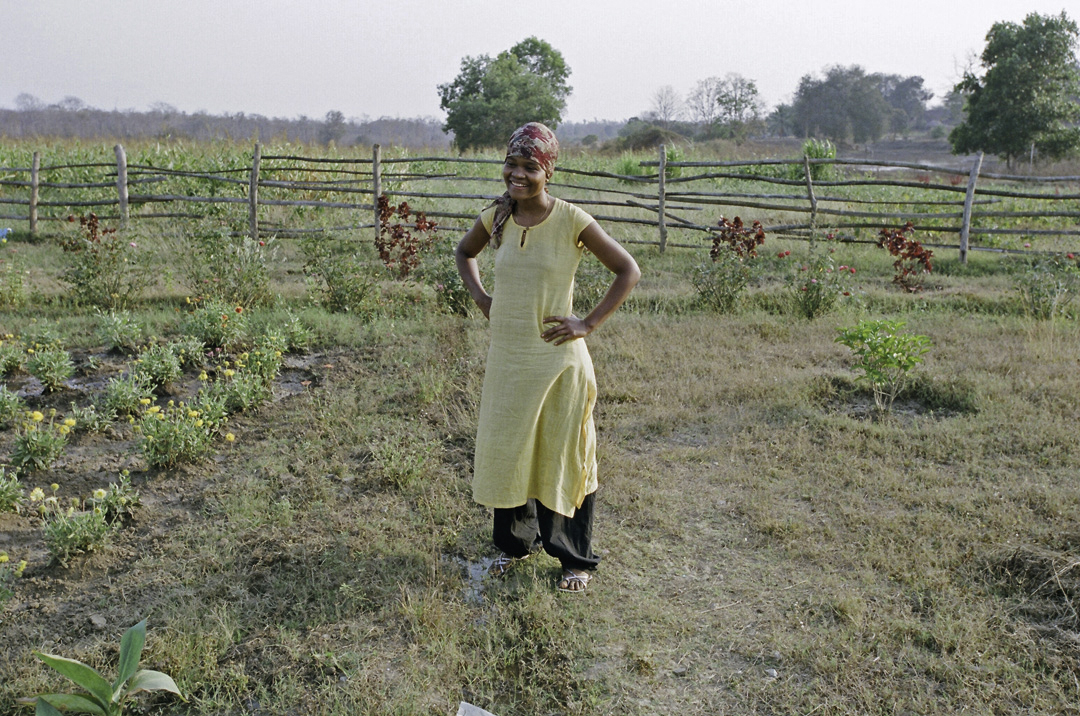
Siddi leader Geeta, Gadgera, Karnataka, India. 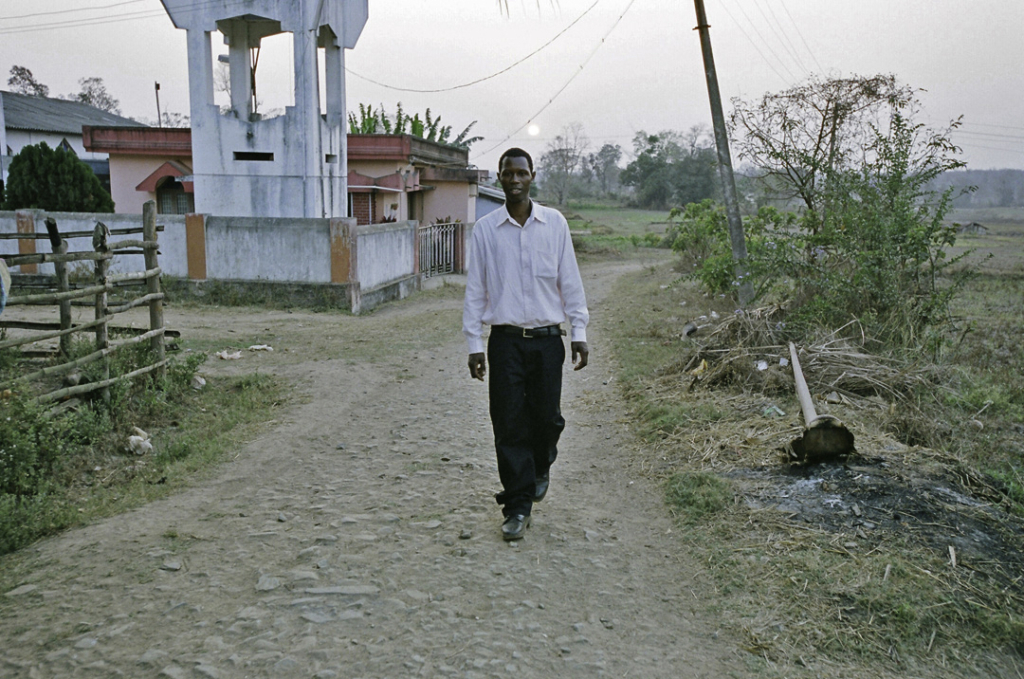
Siddi leader Ramnatha, Gardoli, Karnataka, India. Credit: Andy Martinez. 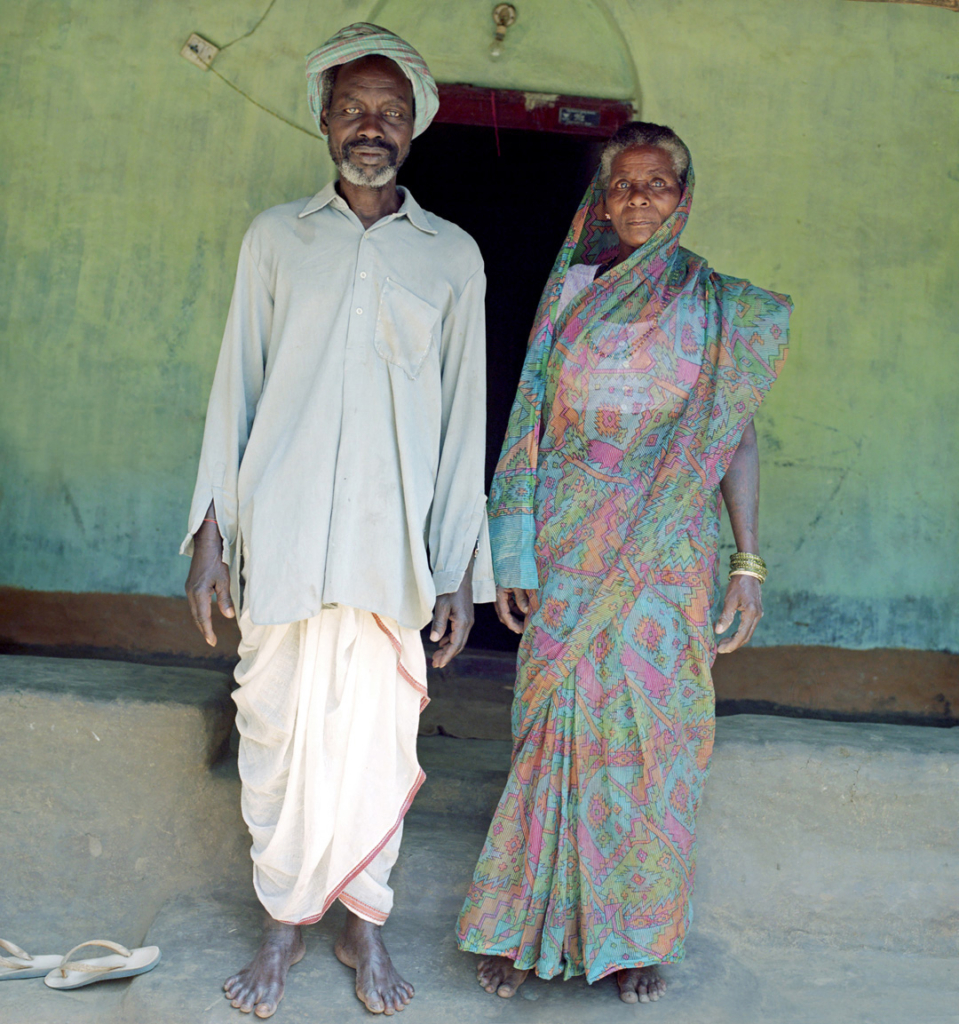
Siddi village elder and his wife in Karnataka, India. 
A Siddi man works for less than the minimum wage in Yellapur, India. Photo credit: Andy Martinez. 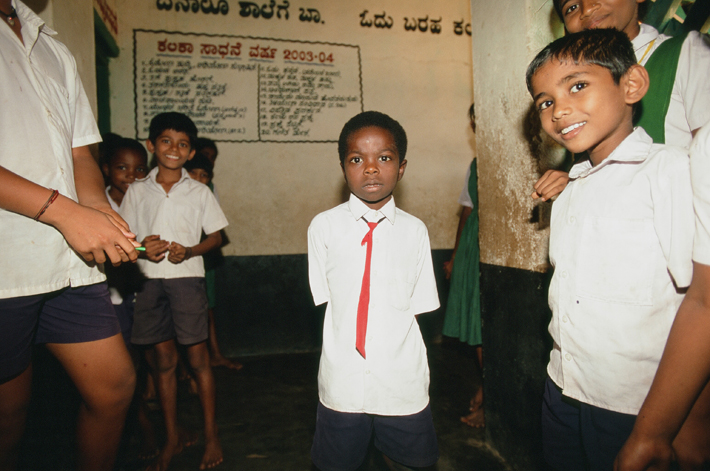
Siddi school boy (centre) in Yellapur, India. Photo credit: Andy Martinez.
Middle East and North Africa
- 01

Introduction
by Sarah El Ashmawy A significant proportion of the Afro-descendant population in the Middle East and North Africa (MENA) originate in the long history of commerce with sub-Saharan Africa, in particular the slave trade, with millions brought…
0 min read
- 02
Israel: the struggle of Ethiopian Israelis for inclusion
by Vanessa Mazzei Ethiopian Israelis have been settling in the country for over three decades, with around a third of the approximately 140,000 community members born in Israel, yet they continue to experience acute discrimination on the…
0 min read
- 03
The continued discrimination facing black Tunisians
by Vanessa Mazzei Tunisia’s sizeable black population has been marginalized for generations. Although Tunisian census data does not take ethnicity into account and there are no specific numbers available, some sources estimate that black…
0 min read
- 04
The dangers of living as an undocumented migrant in Morocco
by Ioana Moraru In August 2013 Ismaila Faye, a 31-year-old Senegalese, was stabbed to death on a bus after he refused to vacate his seat next to a Moroccan woman. The murder, widely condemned as an act of racism by the Senegalese community and…
0 min read
- 05
Egypt: Nubian community health support systems
by Sarah El Ashmawy The opening in January 2011 by then President Mubarak of a new hospital in Aswan, the capital of Nubia in southern Egypt, only underlined the government’s long-term neglect of the health needs of Nubians. This remains the…
0 min read
-
by Sarah El Ashmawy
A significant proportion of the Afro-descendant population in the Middle East and North Africa (MENA) originate in the long history of commerce with sub-Saharan Africa, in particular the slave trade, with millions brought over by Arab slavers to be sold in the region – a practice that persisted well into the nineteenth century. Though estimates vary, there is general consensus that the scale of the trade was very considerable, with one source calculating that between 1700 and 1880 around 800,000 slaves were taken to Egypt, 515,000 to Morocco, 400,000 to Libya, 100,000 to Tunisia and 65,000 to Algeria (Bader, R., ‘Noirs en Algérie, XIXème–XXème siècles’, Thematic session, ‘Society, scenes and actors’, Grand amphithéâtre de l’Institut d’Etudes Politiques, Lyon, 20 June 2006).
It is important to note that not all these communities were created as a result of the slave trade or related activities: Nubians, for instance, are considered indigenous peoples of Egypt and are believed to have been settled beside the Nile in what is now southern Egypt for thousands of years. Furthermore, many black communities settled in the region through historical migration. Nevertheless, the intensity and longevity of the slave trade has left an important legacy of discrimination towards Afro-descendant populations across the MENA region.
More recently, successive waves of migration to different parts of the region – for example, the flows of sub-Saharan workers to Libya during the rule of Muammar Gaddafi – have led to increasing xenophobia towards black populations, as evidenced by the persecution of Tawergha and other black Libyans after Gaddafi’s fall in 2011. Elsewhere, such as in Morocco, a growing population of migrants from sub-Saharan Africa have been subjected to exploitation and abuse, including a growing second generation born in the country.
The diversity of MENA’s Afro-descendant communities
Despite limited recognition across MENA, the region hosts a wide variety of Afro-descendant communities with distinct histories and identities. Even within countries, particularly those with relatively large black populations, members may originate from different patterns of movement that include slavery, migration and longer term settlement.
In Iraq, for example, the Afro-Iraqi community accounts for approximately 1.5–2 million people (Puttick, M., From Crisis to Catastrophe: The Situation of Minorities in Iraq, London, MRG, October 2014, p. 6), mostly concentrated around Basra. While the first arrivals in Iraq were brought to the country as slaves to cultivate the land were known as Zanj, after the island of Zanzibar that is now part of modern-day Tanzania (Labbe, T., ‘A legacy hidden in plain sight’, The Washington Post, 11 January 2004), it is important to note that many Africans have also voluntarily settled in Iraq over the centuries. They also continued to be brought into the country as workers, soldiers or servants from many different countries until the beginning of the twentieth century.
A variety of factors have contributed to the relative lack of information on these communities. In some cases, most of the Afro-descendant population is concentrated in certain parts of the country, often some distance from the state capital and other centres of power. In Tunisia, for instance, the majority of black Tunisians reside in the less developed region of the south – a factor that may reinforce their marginalization at a national level. Furthermore, as in much of the region elsewhere, no official figures on the size of the population are collected, making targeted interventions and other measures such as parliamentary quotas very difficult to implement.
This limited visibility, however, is also replicated in international analysis. For example, though often overlooked within the context of the conflict with Israel, Palestine has a small but highly visible Afro-descendant community which, like many Afro-descendant communities in the region, dates back to the slave trade period during the Ottoman era – though a considerable proportion of the Afro-Palestinian community may have arrived in Palestine earlier, during the Islamic period, as they fled Sudan. Their presence is especially evident in certain towns, such as Jenin, Tulkarem and Jericho, where they represent a significant proportion of the population. Yet information on this community, as well as other Afro-descendant populations in countries such as Iran or Jordan, remains scarce.
Current challenges
In spite of their diversity, Afro-descendant communities from Iran to Tunisia face similar issues, including lack of awareness of their existence, government neglect and social prejudice. In many cases these factors are interlinked, with popular prejudice and racism reinforced by an environment of institutional discrimination. State policies, such as the programme of ‘Arabization’ under Gaddafi, have also contributed to the marginalization of certain black communities. These include Libya’s Tebu, a semi-nomadic tribe long resident in the border area with Chad and currently numbering tens of thousands within the country, who were effectively stripped of their citizenship in 2007 (Van Waas, L., The Stateless Tebu of Libya? Report of the Middle East and North Africa Nationality and Statelessness Research Project, Tilburg Law School Legal Studies Research Paper Series, May 2013, p. 7).
One challenge is that in many countries, while they are deeply marginalized, Afro-descendant communities remain formally unrecognized due to a lack of disaggregated data or limited official definitions that do not reflect the reality of the inequalities they experience. Black Iraqis, for instance, continue to reside in overcrowded and poorly serviced neighbourhoods, with unemployment levels of around 80 per cent. Participation in public life remains severely restricted, even in areas where they comprise the majority of the local population: in Al-Zubayr district in Basra, though 70 per cent of residents are black Iraqis, there is reportedly not a single member of their community on the district council or in the police force (Puttick, M., From Crisis to Catastrophe: The Situation of Minorities in Iraq, London, MRG, October 2014, p. 20).
Black Iraqis continue to face considerable obstacles to their recognition as a minority. Unlike for most communities, there are no state-promoted quotas for representation in government and black Iraqis have yet to achieve high-level office within the country (Salloum, S., ‘Will Iraqi blacks win justice?’, The New York Times, 22 July 2014). This situation is exacerbated by the fact that, in a context of widespread prejudice and the intimidation of community activists, many black Iraqis choose to identify instead according to their religion (ibid.).
Even Egyptian Nubians, despite their historic presence in the country, have experienced serious discrimination, including the confiscation of their lands by the Egyptian governments of the 1960s and 1970s to construct the Aswan dam. The subsequent formation of Lake Nasser inundated their territory and homes, forcing entire villages to relocate to resettlement areas that were built without community consultation. This displacement took a high toll on Nubian culture, which many fear could now disappear, given its deep roots in their ancestral land. Meanwhile, in major centres elsewhere, such as Cairo, Egyptian Nubians are regularly harassed on the basis of their skin colour.
In many countries, too, Afro-descendant communities are still commonly described in terms of the historical servitude experienced by many community members of previous generations, using terms such as abeed (slave) in Tunisia or akhdam (servant) in Yemen. These labels have helped drive the broader stigmatization of these communities. More recently, increasing flows of migration from sub-Saharan Africa have also intensified racist discrimination towards national black populations; for example, in Tunisia, black Tunisians in the north of the country – where the community is less numerous than in the south – are often assumed by their fellow citizens to be foreign migrants.
After the Arab Spring – future prospects for MENA’s Afro-descendant communities
In the wake of the series of popular uprisings known collectively as the Arab Spring, beginning in 2011 in Tunisia and soon spreading to neighbouring countries such as Egypt and Libya, the situation of Afro-descendant communities in the region has changed considerably – for better and for worse. While tentative steps away from decades of authoritarianism have helped expand the democratic space for some communities to participate socially and politically, elsewhere – most notably, in Libya – the failure to establish effective rule of law has left black Libyans vulnerable to violent attacks and displacement.
Racist prejudice and the alleged presence of black mercenaries within Gaddafi’s militias led to indiscriminate attacks and mass killings of black Libyans after the fall of the old regime. Among those communities collectively targeted were the Tawerghans, with an estimated 40,000 forced to flee their hometown of Tawergha by Misrata-based militias: they continue to live a precarious existence in informal settlements, without basic services and at constant risk of harassment, while Tawergha itself remains abandoned several years on.
Yet even in Libya, there have been some tentative signs of progress, with the country’s newly adopted 2014 Constitution officially recognizing Tebu as well as other marginalized groups as ethnic minorities. In Egypt, too, where the post-2011 political transition has also been characterized by internal division and violence, the approval of a new Constitution in 2014 with a provision making a commitment ‘to bring back the residents of [Egyptian] Nubia to their original areas and develop them within ten years’ could go some way to providing redress to the community after decades of displacement (Schwartzstein, P., ‘Changing Egypt offers hope to long-marginalized Nubians’, National Geographic, 1 February 2014). In Tunisia, though reports of discrimination and targeted violence continue unabated, black Tunisians nevertheless are able to advocate more freely for rights and recognition.
A common denominator is that, while insecurity and division have contributed to the continued persecution of black populations across the region, the Arab Spring has helped establish a discourse of rights and inclusion that has at times provided these communities with a platform to mobilize for increased participation and protections. Though often overlooked in analysis of MENA, their situation in the coming years will serve as an important test of the region’s ability to navigate away from conflict and instability towards a more peaceful and tolerant future.

Nubians in Egypt. Credit: Cinty Ionescu. -
by Vanessa Mazzei
Ethiopian Israelis have been settling in the country for over three decades, with around a third of the approximately 140,000 community members born in Israel, yet they continue to experience acute discrimination on the margins of society. The figures speak for themselves: previous analysis of 2008–9 government data by the Myers-JDC-Brookdale Institute showed that poverty levels among Ethiopian Israelis were 41 per cent, compared to 15 per cent among the general Jewish population.
Some civil society organizations argue that this situation is the direct result of discriminatory government policies. For instance, programmes implemented by the Ministry of Aliyah and Immigrant Absorption have tended to relegate the Ethiopian community to poorer neighbourhoods and continued to treat all of them as immigrants, despite the fact that 70 per cent of the community are no longer ‘new immigrants’, according to the normal definition of the term by the State of Israel. According to Fidel, the Association for Education and Social Integration of Ethiopian Jews in Israel:
‘The fact that the Ministry of Aliyah and Immigrant Absorption is responsible for addressing the majority of the Ethiopian-Israeli community’s social and educational issues is inappropriate when the majority of the Ethiopian-Israeli community immigrated to Israel over 30 years ago, and perpetuates segregation.’
‘Specialized support for the Ethiopian-Israeli community should be integrated into the relevant governmental department work programmes. For example, the Ministry of Education rather than the Ministry of Absorption should be taking responsibility for implementation of educational programs for Ethiopian-Israeli students.’
The experience of immigration has also led to significant social change within the Ethiopian community. ‘The cultural crisis that the community faced when they immigrated to Israel had a significant impact on the roles of men and women,’ explains Michelle Shelemay Dvir, Director of Development at Fidel, adding:
‘In Ethiopia, the different roles of women and men were very clearly delineated, with women responsible for the domestic sphere – cooking, weaving and taking care of the children – whereas the men were the dominant authority figures and decision-makers in the family.’
This changed when they came to Israel. Also, as they are mainly responsible for the children, Ethiopian women have greater exposure to the school system, more contact with other Israeli parents through their children and thus generally integrate more effectively into Israeli society than Ethiopian-Israeli men.
A related issue is the transformation that the traditional Ethiopian family unit has undergone since immigration. ‘Since the children learned the language and generally adapted more quickly,’ says Michelle, ‘there was a reversal of the roles of parent and child, causing many of the parents to feel disempowered and unable to support their children.’ Inevitably this is linked to other problems and has contributed to a growing identity issue, especially among teens.
‘The majority of Ethiopian-Israeli teens were born in Israel but are grappling with their identity as both Ethiopian and Israeli – they are struggling to find their place in society and [at the same time] struggling with issues of racism and tolerance.’
Consequently, while Fidel undertakes a range of activities to enhance educational attainment within the community, a key element in the organization’s strategy is the strengthening of the family unit, with staff activists striving to involve the parents as much as possible in their children’s lives and to improve parent–child communication. These efforts have served as a catalyst for positive change within the community. For example, the Fidel school mediator programme has served approximately 17,000 pupils across the country to date, with the dropout rate in schools operating the programme dropping by around 95 per cent: academic performance has improved, parents are active in the educational process and the number of youth passing their matriculation exams has increased significantly.
It is hoped that better access to education could also support a broader transformation of the community situation in other areas, such as employment. Though there have been some improvements over the years, the position of Ethiopian Israelis in the labour market remains significantly worse than that of the general Jewish population. For example, though a 2005 amendment to the 1959 Public Service Law stipulated that Ethiopian Israelis should be adequately represented at all levels of public office, the proportion remains disproportionately low. More generally, sizeable gaps in wages and professional occupations persist.
Nevertheless, in recent years there have been some sign of progress, including the election to the parliamentary Knesset in 2013 of Pnina Tamano-Shata – the first female Ethiopian-Israeli to win a seat – though she subsequently lost it in the 2015 election when her party won fewer seats. The community has also achieved greater visibility within Israel’s popular culture, with Yityish Aynaw becoming the first woman of African descent to be crowned Miss Israel in February 2013.
These are small but important steps towards Fidel’s vision of an Ethiopian-Israeli community that is socially and economically integrated into Israeli society, yet proud of its unique identity. While actualizing this aim remains a somewhat distant prospect, the organization is optimistic that, with continued advocacy and community mobilization, the prospect of an inclusive and equitable society for Ethiopian Israelis could one day become a reality.
-
by Vanessa Mazzei
Tunisia’s sizeable black population has been marginalized for generations. Although Tunisian census data does not take ethnicity into account and there are no specific numbers available, some sources estimate that black Tunisians make up as much as 10 to 15 per cent of the population, with most residing in the south of the country. Yet they remain almost wholly absent from public life and employment, including government positions and other senior roles.
Despite this discrimination, there is still widespread reluctance in the country to admit that racism exists. This stems mainly from the fact that, prior to the 2011 revolution, the subject was taboo because it was seen as undermining national unity. Yet, in reality, some still refer to black Tunisians as abeed, Arabic for slaves, and many black families in the south still bear the names of their ex-slave owners.
Activists say that the government should make name-changing procedures easier for these people, because of the pejorative implications their names carry. In Djerba many even have the term Atig, meaning ‘freed slave’, as a last name on their identity card, while in some remote villages black Tunisians have to take separate buses from the rest of the population. Furthermore, prior to 2011, the country’s Constitution had abolished all forms of association, which made it difficult to organize efforts to advance equality for the black population.
The 2011 revolution gave a chance for this silent and repressed minority to be heard, however. The first organization in the country to fight for the rights of black Tunisians, ADAM for Equality and Development in Tunisia, was formed shortly afterwards to advocate for legal change to strengthen anti-discrimination provisions. Nevertheless, popular denial of the scale of the problem persisted until Mariam Touré, a young Malian student, published an open letter to Tunisians in October 2014 in which she denounced the harassment she was subjected to on a daily basis in a society she believed was ‘infected’ with racism.
M’Nemty is one of the best-known NGOs advocating for the rights of black Tunisians. Like ADAM, it has been campaigning since 2012 and often leads marches in the streets of the capital to denounce discrimination and promote equality. Saadia Mosbah, the organization’s president, described to MRG the impact the letter had within Tunisia.
‘Mariam’s letter felt like a slap in the face for my compatriots, who wanted to show the rest of the world that racism is not part of the values of the Tunisian,’ she said. ‘The issues that Mariam highlighted are known to Tunisians, who refuse to recognize themselves in the behaviour that she has written about. This reality, which has always been hidden, shamed them – this is why they are in denial.’
‘The media also actively feeds this problem by refusing to inform the general public about the real issues at stake. In January 2015, for example, M’Nemty held a press meeting to commemorate the abolition of slavery in Tunisia. The event received little coverage, however. ‘The journalists who attended,’ says Mosbah, ‘explicitly told us that they were forbidden by their editors to write about the issues that we brought up.’
Mosbah also described how difficult it is for the black community to organize itself. Because the authorities fail to recognize the seriousness of the issue, Afro-Tunisians are still very much spectators rather than participants in the country’s social, political and economic life. ‘“Minority” is a problematic term in Tunisia,’ says Mosbah. ‘We replace it with the term “community”.’ Furthermore, associations like M’Nemty have to deal with a lack of donor support and the challenges of self-financing, as well as limited popular awareness and restrictive eligibility requirements.
Though the high expectations of the Arab Spring have yet to be realized and discrimination in Tunisia is still entrenched, Mosbah acknowledges that there has been some progress – the very fact that discussion of these issues is possible is a significant milestone for the community. ‘This is a new conversation that we are having,’ she says, ‘and it stems from the new freedom of expression.’ These first steps towards acceptance and tolerance are part of the country’s broader transition towards a more inclusive democracy. Ensuring this long-neglected constituency is able to take part in Tunisia’s future will therefore be an important element in the country’s long-term development and stability.
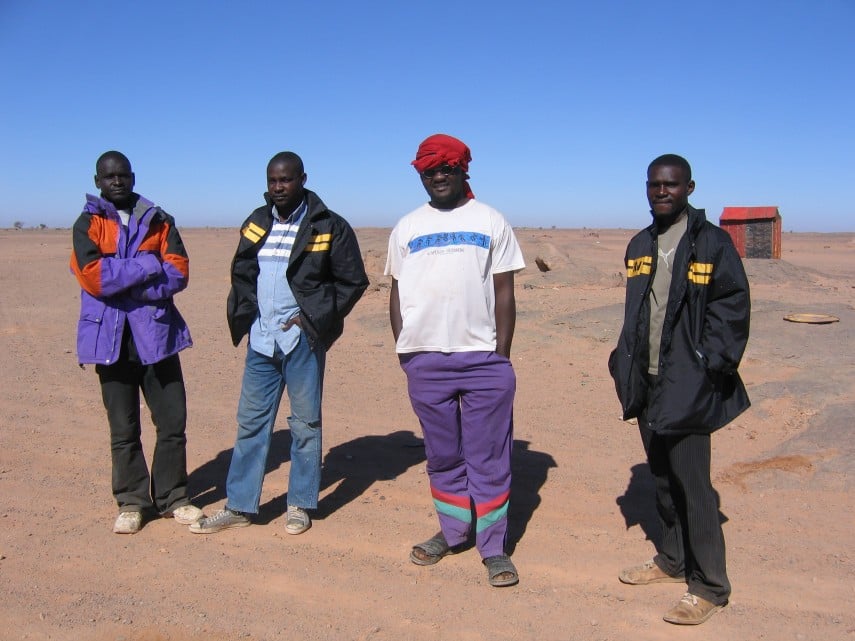
Migrants in Bir Lahlou in the Free Zone of Western Sahara on their way to Morocco. -
by Ioana Moraru
In August 2013 Ismaila Faye, a 31-year-old Senegalese, was stabbed to death on a bus after he refused to vacate his seat next to a Moroccan woman. The murder, widely condemned as an act of racism by the Senegalese community and local rights groups, is just one example of an endemic problem in the country: the mistreatment of its sub-Saharan population. Since the 1990s, Morocco has become an increasingly popular transit country for migrants seeking a better life in Europe. But while poverty, political turmoil, civil conflict and persecution continue to push large numbers of sub-Saharans to leave their countries, strict European border controls and the high costs of migration have meant that, in practice, many remain in Morocco for years.
The marginalization of undocumented migrants, who receive no support or official recognition from the government, not only undermines their access to housing, employment and basic services, but also places them outside the formal justice system. In fact, undocumented migrants face widespread discrimination at all levels of society – including from the police and government officials. Local attitudes to sub-Saharan migrants are often characterized by deep-rooted prejudice and stereotypes, associating migrants with terrorism, AIDS and criminality. These negative representations have also been reinforced by the media.
Due to their clandestine status, undocumented migrants are not only underpaid by employers and overcharged for basic necessities such as food and accommodation, they are also unable to benefit from police protection or make use of official channels of complaint. This makes them especially vulnerable. Recent research and interviews have shown that attacks and intimidation are regular events, encouraged by their lack of formal recognition in the country. In the words of a 2013 Médecins Sans Frontières (MSF) report, ‘The fact that sub-Saharan migrants are classified as “illegal” means that the majority live with the constant fear of arrest and expulsion and the ever present threat of violence, abuse and exploitation.’
This is why other sub-Saharan migrants viewed Faye’s murder not as an isolated incident but part of a broader pattern of exclusion and discrimination in the country. In the wake of his death, hundreds of Senegalese congregated in Rabat to protest against racism. Moroccans also went online to voice their support for the migrant community.
While there have been positive signs of change, including a new migration policy announced in 2013 that announced the establishment of a refugee determination system and the regularization of thousands of undocumented migrants, official policies have continued to result not only in police raids and deportations but also regular instances of targeted attacks against sub-Saharan residents. Recent examples include the murder of a 25-year-old Senegalese migrant, Charles Ndour, in August 2014 by a Moroccan gang.
Beyond the most high-profile assaults, however, a daily backdrop of sustained violence persists, driven by deep-rooted prejudice and continued institutional failings within the police. While the 2013 legislative reforms are welcome, much remains to be done before Morocco’s sub-Saharan population can fully enjoy their rights.
-
by Sarah El Ashmawy
The opening in January 2011 by then President Mubarak of a new hospital in Aswan, the capital of Nubia in southern Egypt, only underlined the government’s long-term neglect of the health needs of Nubians. This remains the case, despite the dramatic political change of the last few years within the country.
In Cairo, in response to this exclusion, the Nubian community organized a support system for members of their community who need to access health care that was not available in Aswan. Each of the 22 villages of the Nubian region collected money to rent or buy a modest space in Cairo where inhabitants of the same village could stay while receiving health care in Cairo. This was coordinated through the Nubian club, which was created to maintain the cohesion of the Nubian community in Cairo and has an apartment in Tahrir Square for Nubians to meet and seek support when facing any troubles. The Nubian club was thus at the heart of the self-created health care support system.
This self-support system is a symptom of the problem of health care in Egypt, particularly in the peripheries of the country like Nubia. Despite the efforts of the Nubian community in Cairo to help Nubians living elsewhere to access services, the quality of health care accessed in Cairo by Nubians depends on their income and resources, which are usually among the lowest in the country. To tackle this, Cairo Nubians have consolidated networks of individuals inside hospitals and medical centres who are willing to help Nubians in dire need of health care. But the problem remains bigger than the action of individuals.
There is a long history of government neglect of Nubians in Egypt. Many Nubians were forced to leave their land to make way for the construction of the Aswan Dam in the 1960s. The government promised compensation and shelter; however, the resettlement plan offered poorly designed buildings for Nubian families. There were very few employment opportunities in the urban ‘new’ Nubia, and as a result many Nubians moved to Cairo for better education and employment opportunities. Nubians had little or no access to basic services.
The Aswan hospital is the only one in the new Nubia to serve the 22 villages of the Aswan governorate. The eight medical centres scattered around new Nubia are difficult to access, lack basic medical equipment and often have no personnel. In some places, Nubians have to travel 44 km to access their closest medical centre, some of which are not even equipped to treat injuries or deliver babies. The lack of the simplest equipment, such as antidotes for scorpion bites or dialysis machines, has led to deaths from diseases which are easily preventable. The Aswan hospital, for example, only has two dialysis machines, one of which is not functional.
This is not only due to the poor health care policies of the Egyptian government but also the lack of reliance on local resources. Doctors from Cairo who work in the hospital leave Nubia three days a week to go back home, while Nubian medical students pursue their careers in Cairo. Nubians have frequently addressed their local governor, demanding better social services, including health care. Each time, their demands have been met with a promise of policy change, followed by a ‘bureaucratic’ excuse that refers the action back to the Cairo cabinet.
Lost in the pile of files referred back to the Cairo cabinet, the lack of action on the issue of health care in Nubia has left Ahmad, an 11-year-old boy from Aswan who suffers from epilepsy, no choice but to travel to Cairo. Here he hopes to find an Egyptian doctor who will finally sign a form that will enable him to access health care in Cairo, rather than the Aswan hospital, which cannot provide him with the care he needs.
Europe
- 01
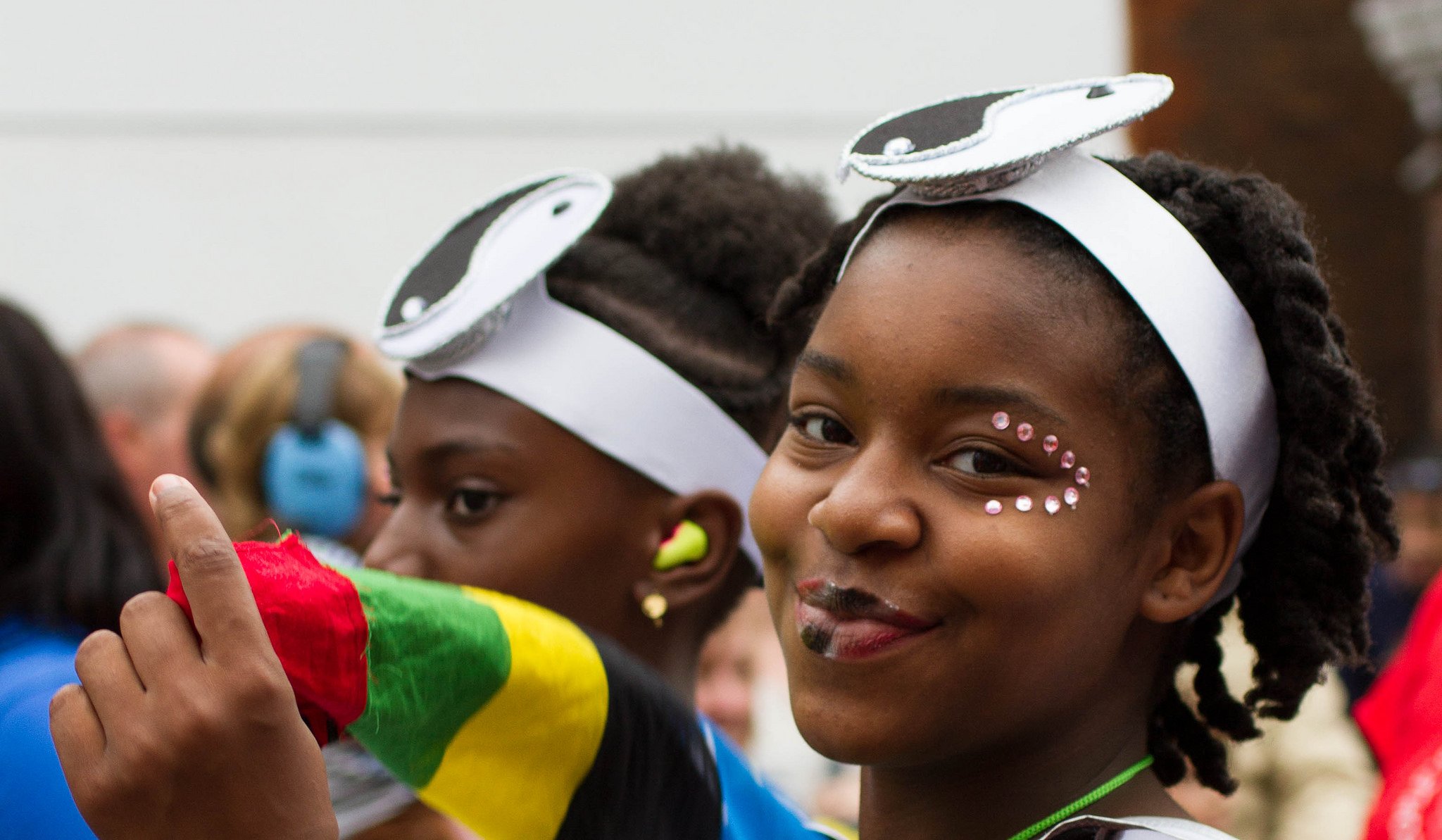
Introduction
The history of Europe’s black population stretches back for centuries, driven by the involvement of many European countries in the slave trade and more recently by migration. This includes, post-Second World War, the flow of workers from…
0 min read
- 02
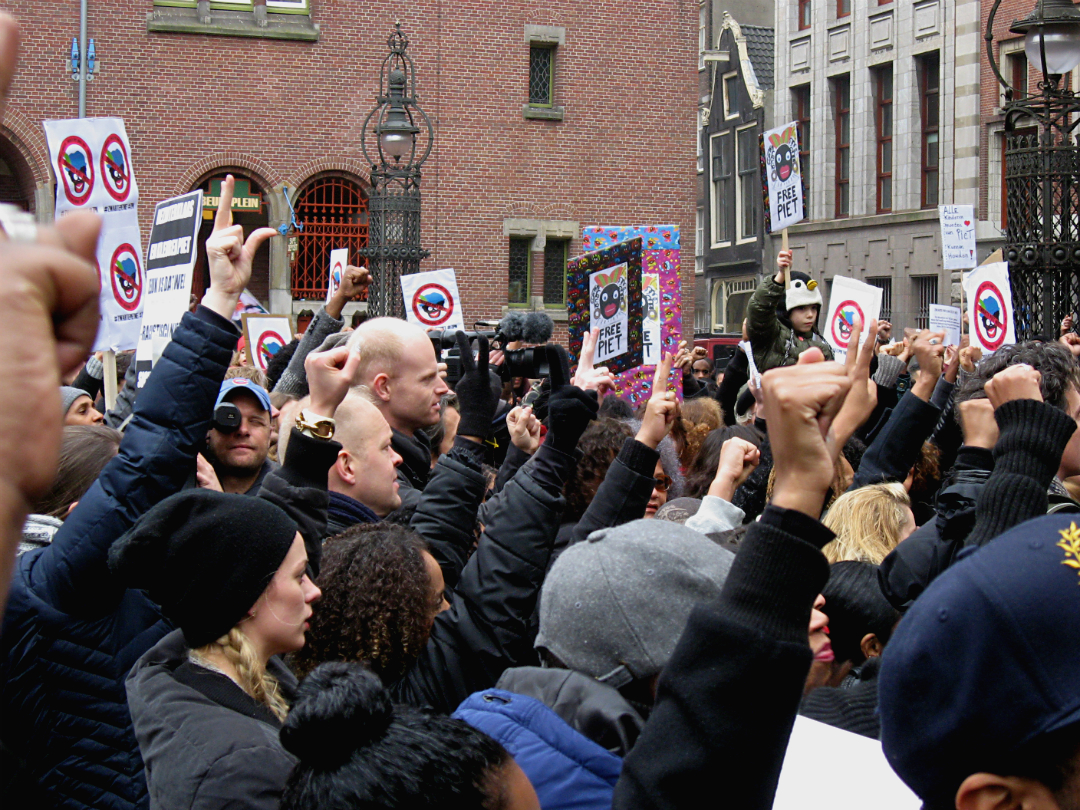
The Netherlands: Black Pete – a Christmas custom or cultural racism?
by Katerina Avina Every year in the Netherlands, Christmas is preceded by the arrival of Zwarte Piet, ‘Black Pete’, a popular figure dating back to the nineteenth century. Based on a well-known children’s book about a saint and his black…
0 min read
- 03
Making Germany a ‘no-go’ zone for racism
by Katerina Avina In recent years, Germany has been experiencing a surge in hate crimes against minorities, including its black population. While there has been a reluctance to recognize the extent of this violence, rising xenophobia within the…
1 min read
- 04
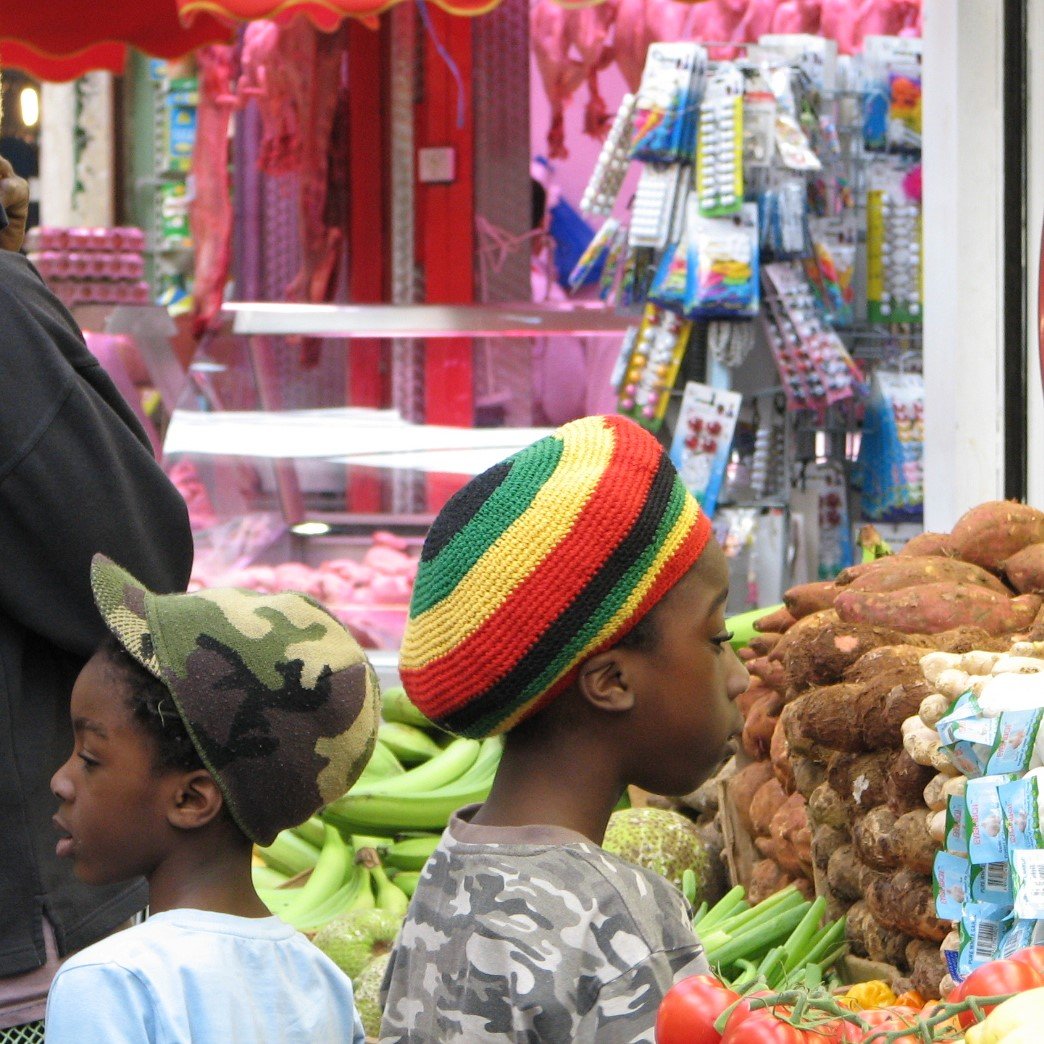
Gentrification brings new challenges for Brixton’s minority communities
by Electra Babouri Brixton is an inner London neighbourhood renowned for its ethnic and cultural diversity. Beginning in the late 1940s, when migrants from the Caribbean began began to settle in the area, it has cemented a reputation as a…
1 min read
- 05
Ukraine fails to address hate crime against migrants and other groups
by Irene Fedorovych The Ukrainian state has been slow to recognize the reality of hate crime in the country. Even now, there continues to be a clear gap between the small number of cases officially reported each year and the much larger number…
0 min read
-
The history of Europe’s black population stretches back for centuries, driven by the involvement of many European countries in the slave trade and more recently by migration. This includes, post-Second World War, the flow of workers from various parts of the African continent to Great Britain, France, the Netherlands, Spain, Portugal, Belgium, Germany and elsewhere, driven in part by former colonial ties between sending and receiving countries. More recently, some Africans primarily seeking employment have been drawn for various reasons to Ireland, Greece, Italy and Spain, with the latter two countries in particular viewed as gateways into Europe. Besides labour migration, there has also been a significant influx of refugees from conflict in Africa seeking political asylum, especially in Austria, Denmark, Finland, the Netherlands, Norway, Sweden and Switzerland. African students have also been attracted by educational opportunities to travel to countries in Eastern Europe, including Bulgaria, Czech Republic, Hungary, Latvia , Poland, Russia, Slovakia, and Ukraine.
Nevertheless, only around half of the countries in Europe have a significant black population at present, and the actual make-up of the African cultures present in each mirrors their colonial past in Africa and the Americas, or in other cases their receptivity to refugees from social, economic and political turmoil in those regions. The growth of Europe’s African population, especially in recent decades, has produced a negative reaction in some quarters, associated in large part with the rise of xenophobic and nationalistic right-wing politics. That reaction in turn is producing a group identity among many Afro-descendant Europeans, largely arising from a shared experience of discrimination.
At the same time, the choice of a precise self-identification among them is becoming increasingly contested, with the appearance of alternatives such as Afro-European, Afropean, and black, though most still prefer to identify either with the name of the native culture of their country of origin or that of the European society in which they live, even in the face of discriminatory treatment. Meanwhile, the mainstream discourse within Europe ranges from ‘colour blindness’ in countries such as France, Germany, Portugal and Spain, where social issues and inequality are presented largely as matters of class and geography; to varying degrees of commitment to multiculturalism, as in the Netherlands and the United Kingdom; to an emphasis primarily on civil rights and non-discrimination elsewhere. Not only more recent immigrants, but also earlier residents of African origin, whose families have been present for generations, are now finding themselves both voluntarily and involuntarily redefined. The terms of this discourse are complicated all across Europe by a reluctance to employ concepts concerning race and ethnicity in the lingering wake of the Holocaust. This makes it difficult to formulate generalizations about the number, official status and living conditions of black people in the absence of related data, thus often rendering the black population invisible to the public.
Estimates of the black population in Europe are inherently imprecise, in fact, not only due to varying categorizations of black identity and the deliberate rejection of any such categories by many governments, but also due to the presence of uncountable illegal immigrants. Consequently, there are credible estimates for the total population ranging from more than 7 million to as many as 15 million (Lusane, C., ‘Pan Africanism and the black European movement’, in Invisible Visible Minority: Confronting Afrophobia and Advancing Equality for People of African Descent and Black Europeans in Europe, Brussels, European Network Against Racism, December 2014, p. 33.; Blakely, A., ‘Black European responses to the election of Barack Obama’, in European Network Against Racism, op. cit., p. 76), depending upon the definition of ‘Afro-descendant’ followed and the sources used. While the lower estimate is closely based on census data and, for ease of identification, restricted to those of sub-Saharan origin, others that include blacks from North Africa and take into account estimates by NGOs and independent research reach much higher figures. A modest estimate for the countries in Western Europe with the largest population, France, Germany and the United Kingdom, finds Germany – with a total population of over 80 million – having only around 270,000 residents of sub-Saharan origin (Blakely, op. cit., p. 80), which can be explained by various historical and geographical factors. France, by contrast, has a black population of about 3 million (though estimates vary considerably) out of a total of 66 million (Ibid., p. 77), and the UK has as many as 1.8 million in its total population of 63 million (Ibid., p. 79). Other countries with a measurable black population now include Ireland in the extreme north-west, where it has risen to around 60,000 (Central Statistics Office, This is Ireland – Highlights from Census 2011, Part 1, Dublin, March 2012, p. 37); the Netherlands, where it is around half a million (Ibid.); Scandinavia, where the numbers are relatively small but related problems of discrimination and ethnic division are still surfacing; Russia, with tens of thousands of African students who trained there under the Soviet regime; as well as Italy and Spain, both countries on the Mediterranean with growing migrant populations as well as established communities of African origin. While the percentage of the European population of black African descent is admittedly still under 2 per cent, the social construct of ‘blackness’ as a description is becoming ever more common.
The black populations in European societies, while in many cases seeking integration or assimilation, are at the same time formulating a strong sense of shared identity. This has resulted in growing black consciousness and organization along ethnic, religious, professional and political lines, producing associational structures now numbering in the hundreds in Europe, with many having their own periodicals and websites. As growing numbers of immigrants gain citizenship they are becoming recognized as potentially significant voting blocs. It is also noteworthy that the new millennium has witnessed a growing black presence among elected officials, even in countries where the actual black population is relatively scarce. The most prominent examples in the countries with the largest black populations are Lady Valerie Amos, who served as leader of the British House of Lords from 2003 to 2007, and Christiane Taubira, serving as French Minister of Justice from 2012 to the present. Notable in countries with a small black population are the election in Russia of Jean Gregoire Sagbo to the City Council of Novozavidovo, a village 60 miles north of Moscow, in July 2010; the election in June 2012 of John Eret, the first black mayor in German history, in the village of Mauer, near Heidelberg; and the election of the first black members of the German parliament: Karamba Diaby, a chemist originally from Senegal and Charles Huber, an actor born in Munich to a Senegalese father and German mother in September 2013. An even more remarkable electoral breakthrough in Eastern Europe was the election of two Africans to the Polish Parliament in 2010 and 2011: John Abraham Godson, originally from Nigeria; and Killion Munyama, originally from Zambia.
Nevertheless, it is also important to remember that, notwithstanding such striking examples of progress, a pervasive negative climate towards black communities persists across Europe. The most dramatic evidence of this in the political sphere is the experience of Cecile Kyenge, an immigrant from Congo to Italy, who became the first black cabinet minister there when appointed Minister of Integration in 2013. After her election, however, she was exposed on a number of occasions to public incidents of abuse and intimidation, such as having bananas thrown at her at a political rally and being publicly compared to an ape by one conservative senator. The most alarming recent related development in European electoral politics is the success of ultra-rightist, xenophobic parties in many countries, best illustrated by the French National Front of Marine Le Pen winning 25 per cent of the vote in the 2014 European Parliament elections.
Moreover, acts such as public racist insults have not been confined to the political arena, since abusive chants have been conspicuous in soccer stadiums from Iberia to Siberia for decades, and continue despite efforts by the governing sports agencies to stop this. In fact the single most challenging feature of the lives of black people in Europe is a constant confrontation with racist bias that affects almost every facet of daily life, including employment, access to education, health care and personal safety. Nowhere does this result from legal segregation, yet there are visible clusters of immigrant communities on the edges of major cities, as in the case of Paris or Lisbon, and in poorer sections of other cities. The work options for immigrants in general are concentrated in menial jobs and those that the native populations typically avoid. In the case of black people, even those who are highly educated often work in positions for which they are overqualified. Black people also experience an unemployment rate that is considerably higher than that of white people.
At the same time, across Europe there is a widespread reluctance to acknowledge or recognize the true extent of racism towards its black population. A graphic example of this can be seen in the media coverage in 2014 of growing protests against the annual celebrations of the Black Pete figure in the Dutch Saint Nicholas tradition. Despite their general admission that this figure, since the mid-nineteenth century, has borrowed heavily from popular blackface minstrel and Sambo stereotypes, a large proportion of the Dutch public regard it as a harmless custom without recognizing its strong roots in historic prejudice towards Africans. In France, similarly, the stated commitment to social egalitarianism has often meant that ethnic discrimination have not received sufficient attention from policy-makers. Such an attitude prevents close examination of what might be the underlying causes of the societal alienation that has driven periodic violent outbursts from disaffected black and Muslim youths in and around Paris. Common patterns of discrimination based on colour and ethnicity are in fact evident in all European societies with a significant black population, though usually also engendering formal initiatives and demonstrations against such practices. Russia and Eastern Europe, however, stand out as exceptions. Although these are the regions with the smallest black populations, racist animosity is particularly intense, and attracts few official denunciations. Because of the level of skinhead, neo-Nazi and ultra-nationalist activity in many of these countries, it is dangerous, especially for black males, even to go out in public alone.
More positively, however, collaborative initiatives are now under way by various national and global organizations to advance equal rights and end discrimination. European Parliament members have met periodically for a Transatlantic Minority Political Leadership Conference to discuss viable transatlantic policies to combat discrimination and advance inclusion, including a joint agreement between the European Union and United States, in recognition of the global nature of these issues. Many of these initiatives are supported by the US Commission on Security and Cooperation in Europe, also known as the Helsinki Commission. At a local and national level, these have been accompanied by a wide range of anti-racism initiatives and declarations of solidarity that have contributed to a more inclusive understanding of citizenship. The future of African communities in Europe will depend in part on efforts such as these to counter the deep-seated legacy of discrimination towards Africans.
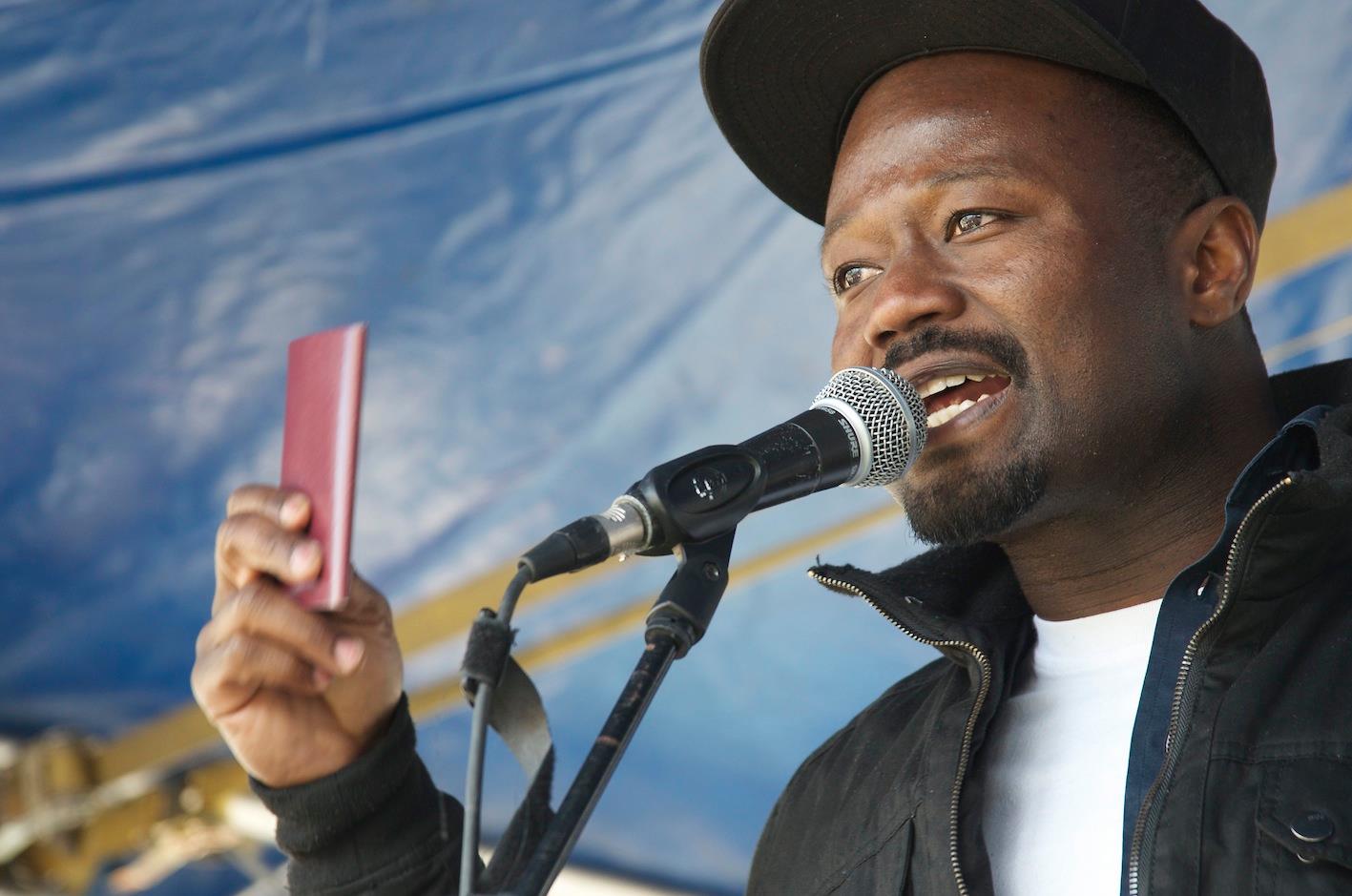
Jerry Afriyie, spokesperson and NLWB founder. -
by Katerina Avina
Every year in the Netherlands, Christmas is preceded by the arrival of Zwarte Piet, ‘Black Pete’, a popular figure dating back to the nineteenth century. Based on a well-known children’s book about a saint and his black servants, Black Pete has for generations been a central feature of celebrations in the weeks preceding the feast of Saint Nicholas on 5 December. As part of the festivities, white Dutch participants parade through the streets wearing blackface, rouge and dark frizzy wigs – a clear caricature of an African man, rooted in historic stereotypes. But while it is widely regarded as a harmless tradition, for the majority of Holland’s black population it is a painful reminder of a recent colonial history where Africans were dehumanized and enslaved.
In recent decades, however, protests against Black Pete have increased, led in part by Holland’s African population. In the 1980s, for instance, Surinamese migrants launched the campaign ‘White Claus and Black Pete? This is no party!’ and set up the action committee, ‘Black Pete = black grief’. More recently, two famous black Dutch artists, Quinsy Gario and Kno’ledge Cesare (Jerry Afriyie), protested through an art project to attract people´s attention to the issues of racism and intolerance associated with the image of Black Pete. After distributing t-shirts with the slogan ‘Black Pete is racism’, they were subsequently arrested by local police officers.
Since then, other organizations have been advocating for authorities to reconsider the practice. Among these is the ‘Black Pete Is Racism’ campaign, led by the civil society collective Nederland Wordt Beter (NLWB). By disseminating information and news stories through social media and other means, NLWB is attempting to challenge popular attitudes to this outdated tradition. MRG spoke with Jerry Afriyie, spokesperson and NLWB founder, about their organization’s efforts to raise awareness about racism in the Netherlands today.
MRG: What important concerns does the Black Pete bring up in the Dutch society?
JA: Dutch children are brought up to believe Zwarte Piet is a harmless tradition, but Zwarte Piet is more than that. Zwarte Piet degrades people of African descent. With whites being the master and blacks being the servant, the tradition tells our children blacks are inferior to white people. I think that people who say that Zwarte Piet is harmless lack empathy and knowledge of Dutch slave history. If you know the racist history of the Netherlands and how blacks were degraded throughout the centuries – even to this day, you will know Zwarte Piet is not harmless. The connotations cannot be denied.
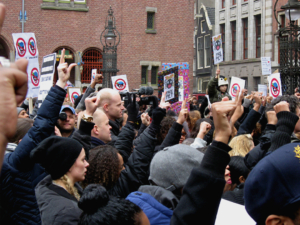
An anti Zwarte Piet protest in Amsterdam on 16 November 2013. Credit: Constablequackers/Wikimedia Commons MRG: What is your campaign hoping to achieve, and in what ways do you raise awareness?
JA: Our campaign ‘Zwarte Piet Is Racism’ started in July 2011 as a community awareness campaign to highlight the racist element of Zwarte Piet. We grew up with the Sint Nicolaas tradition and, as blacks in the Netherlands, we experienced the racist element as an assault on our human rights. We believe that in our current society, in the twenty-first century, it is time to get rid of racial stereotypes and make Sint Nicolaas a joyful celebration for everyone, not just the majority. We are trying to achieve our goal through lectures, debates, social gatherings, protests and talks with opposition groups and organizations as well as the Dutch government.
Where for decades you couldn’t talk publicly about the racist element in the tradition, more and more people are expressing their opinion freely today. Even Dutch celebrities are feeling safe enough to take a stand against Zwarte Piet. Most support comes from young people: black people, white people, Muslims, LGBT – young people from every corner of the Dutch society. The whole world is following what is going on here. Recently there have been protests against Dutch racism in France, Germany, Portugal, the UK and more countries. I think a growing number of people have become aware that we need a change, and that Zwarte Piet can no longer persist. Sint Nicolas was celebrated for centuries without the figure of Zwarte Piet, so we know this is possible.
MRG: Protests against the practice have had some success in Amsterdam, where they have now brought in other versions, such as the yellow ‘Cheese Pete’. Is the situation still very different elsewhere in the country?
JA: Our protests have been very fruitful, especially in Amsterdam. But we are not there yet. It is a step in the right direction, but not the change we need. We believe racism cannot be modified. We must deal with racism as if we are dealing with the worst cancer. There is a great part of the country, in villages and smaller cities, where people do not want to seek change – their argument is that there are no blacks, or hardly any blacks, to offend. This is of course ignorant. The Dutch were the worst kind of slave owners during the transatlantic slave trade. People do not acknowledge the racism in Zwarte Piet’s appearance, because the history of colonialism and slavery is barely mentioned in our school textbooks.
We do not want the change to be cosmetic. Real change is what we are after, not a handout. Real change will be positive for the country and the generation to come. Get rid of the stereotypes and educate the public, especially the next generation, about racism, discrimination and most importantly Dutch colonialism and its history of slave trading.
MRG: In what other areas is discrimination against people of African descent visible in the Netherlands? And what other issues do you see as priorities for your campaign to end racial inequalities?
JA: I know this is not going to sit well with the Dutch population. But just like many western countries the Netherlands is a racist country. Zwarte Piet is the most blatant evidence of this. But overall the daily racism is hidden. Of the 225 representatives in the Dutch parliament, for example, there’s not a single person of African descent. Therefore it is very disturbing to see the white population using Zwarte Piet, a figure based on the stereotypical depiction of black people in the nineteenth century, as a role model for our children.
Zwarte Piet is the symptom of a bigger problem. The actual problem is institutional racism. The country has a soft spot for racism and to this day refuses to face it. People of African descent and many non-whites are being discriminated against regularly. Often police discrimination goes unpunished and discrimination in the labour market is rarely checked. There is a widespread attitude that ‘slavery was a long time ago, get over it’. Even as we speak, the government has decided to withdraw the subsidy for the annual national commemoration of the abolition of slavery. But a growing number of black activists and others are making sure our children will be born and raised in a more just society. The country must take our call for change very seriously. We need the international community to get involved and show solidarity with our cause, for racism in the Netherlands is racism everywhere.
-
by Katerina Avina
In recent years, Germany has been experiencing a surge in hate crimes against minorities, including its black population. While there has been a reluctance to recognize the extent of this violence, rising xenophobia within the country received international attention in 2006 when a German engineer of Ethiopian descent, Ermyas Mulugeta, was beaten into a coma by far-right extremists at a bus station in Potsdam on the eve of the World Cup. The murder led to nationwide demonstrations and calls for local authorities to take urgent action.
Immediately following this incident, a former government spokesman and leader of an anti-racism organization called Show Your Colour, Uwe-Karsten Heye, argued that some parts of Germany were too dangerous for foreigners to visit. These fears were also highlighted when the Africa Council, an umbrella organization of African groups and communities in Germany, printed and distributed thousands of brochures of so-called ‘no-go‘ zones for visitors of African and Asian origin, as well as providing useful information on clubs, pubs and other public venues that used to have a history of racist attacks.
Since then, despite widespread condemnation, racist violence against Germany’s black population has persisted. ‘Nowadays,’ says Tahir Della, a member of the civil society organization Initiative Schwarze Menschen in Deutschland (ISD Bund), ‘public opinion towards minorities is becoming more and more hostile.’ The risk of targeted attacks against the black population remains high in many parts of the country, according to Della, including on the outskirts of Berlin and other cities, such as Rostock and Leipzig. This violence has in part been driven by neo-Nazi groups and other extremist groups, many of which have been banned. ‘It would be good if there were more of these sanctions,’ says Della, ‘and if they were implemented persistently. In our opinion, even though the rate of racist attacks could not be reduced, this would help to minimize the radius of operation of the organized ‘right wing’ and might prevent other crimes.’
However, without a broader effort to transform social attitudes, these measures will only have a limited effect. Discrimination against the black population is still manifested in many areas of life, including even at times the police. ISD Bund has been campaigning against racial profiling for several years now. ‘We consider this to be a form of institutionalized racism’, says Della.
‘Using skin colour, ethnicity, religion, origin or language as the basis for identification checks and searches without fundamental evidence, this is the basis of racist humiliation and violence. Apart from the unlawfulness of this habit it marks the black population as something “different”, “suspicious” or even “threatening”, which leads to the marginalisation and deprivation of these people’s rights – or at least condones it.’
These concerns have become even more pressing with the rise of xenophobic and racist political movements in the country.
To tackle the root causes of racism, ISD Bund undertakes a range of activities to promote a better popular understanding of these issues, with the aim of transforming social attitudes. ‘Racist attacks against the black community in Germany can only be prevented effectively if all social classes and structures fight together for a society free of discrimination and racism,’ says Della. ‘All public institutions should make it clear that racism can have no place in society.’ Germany’s future as a multicultural country will likely depend on its ability to ensure that the basic rights of its black population, as well as those of other vulnerable minority groups, are respected.
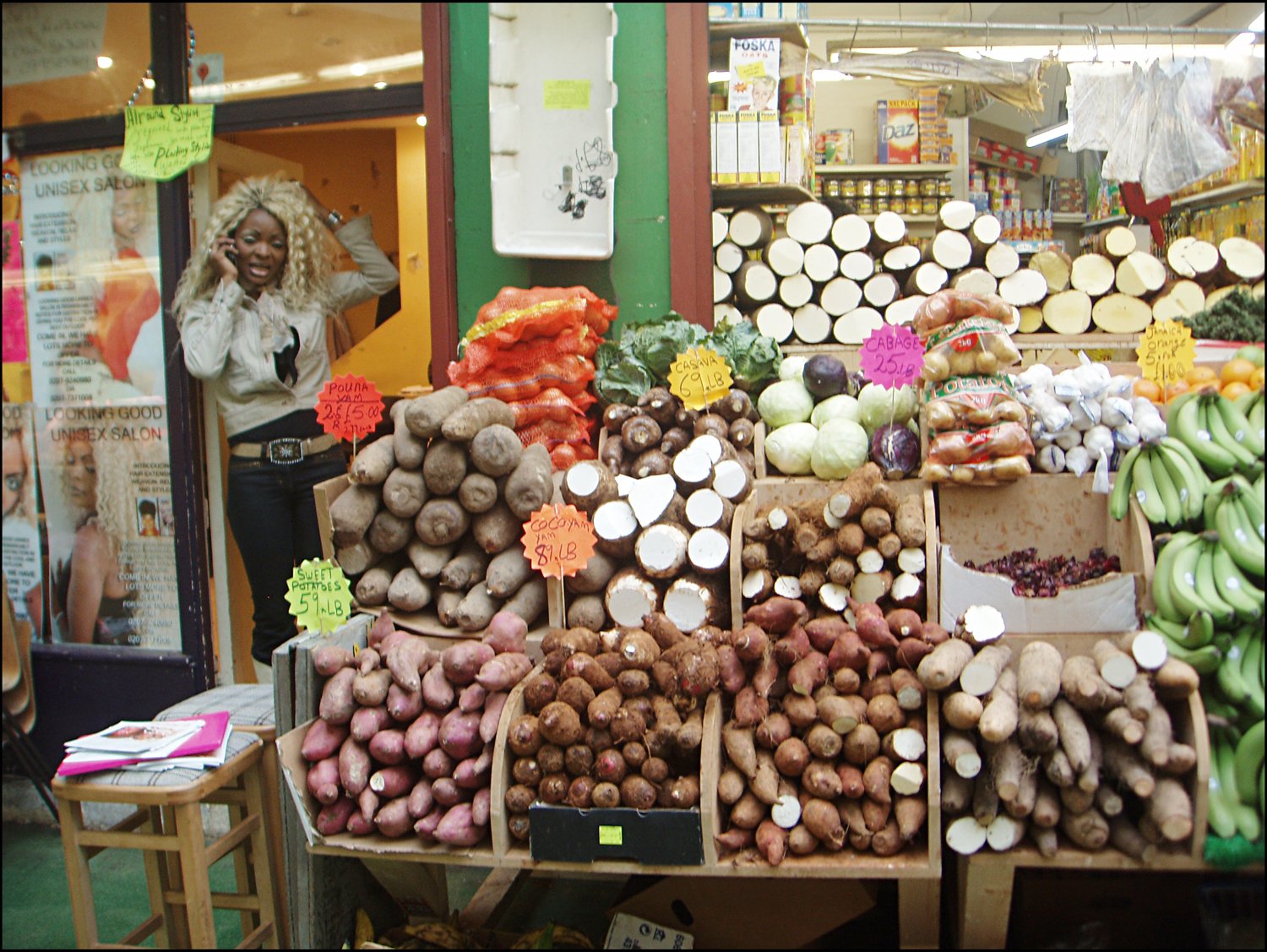
-
by Electra Babouri
Brixton is an inner London neighbourhood renowned for its ethnic and cultural diversity. Beginning in the late 1940s, when migrants from the Caribbean began began to settle in the area, it has cemented a reputation as a multi-ethnic hub, with a vibrant music scene and an array of global cuisines. Yet Brixton has also seen serious political unrest, against a backdrop of unemployment, poor housing and social exclusion, highlighted by the 1981 riots. More recently, however, the local communities have been facing a new threat – gentrification. Ironically, this risks endangering the very qualities that have attracted interest and investment in the area as many residents, particularly those from minorities, find themselves priced out of Brixton.
Brixton’s landscape and demography have been slowly transforming for years, but this process has recently accelerated. While genuine regeneration has taken place and brought some benefits to communities, in many cases the neighbourhood’s image has improved while its communities have been left behind. Attracted by its multi-ethnic community, alternative feel and affordability, many high-earning white professionals – a relatively rare presence back in the 1980s – have begun moving in to the area. Simultaneously, new property developments are booming, pushing house prices up as well as the leases for commercial properties, creating considerable pressure for some traders. This is epitomized by the redeveloped Granville Arcade, now known as Brixton Village Market, where a multitude of new shops have opened to cater to a more affluent clientele – a situation that has reportedly left some minorities, such as Brixton’s Jamaican community, with a sense of displacement.
The situation highlights the difficulty of promoting economic development that is inclusive for all, particularly as London continues to struggle with an acute housing crisis. While social housing is becoming increasingly scarce, the cost of a home is rising at an alarming pace: for example, in the London Borough of Lambeth, where Brixton is situated, house prices were 37 per cent higher in the second quarter of 2014 compared to a year before. Housing shortages are particularly affecting Brixton’s black and minority ethnic (BME) population, who are more likely to experience poor housing conditions, unemployment and other indicators of social exclusion. At a national level, for example, they are reportedly seven times more likely to live in overcrowded accommodation than white households.
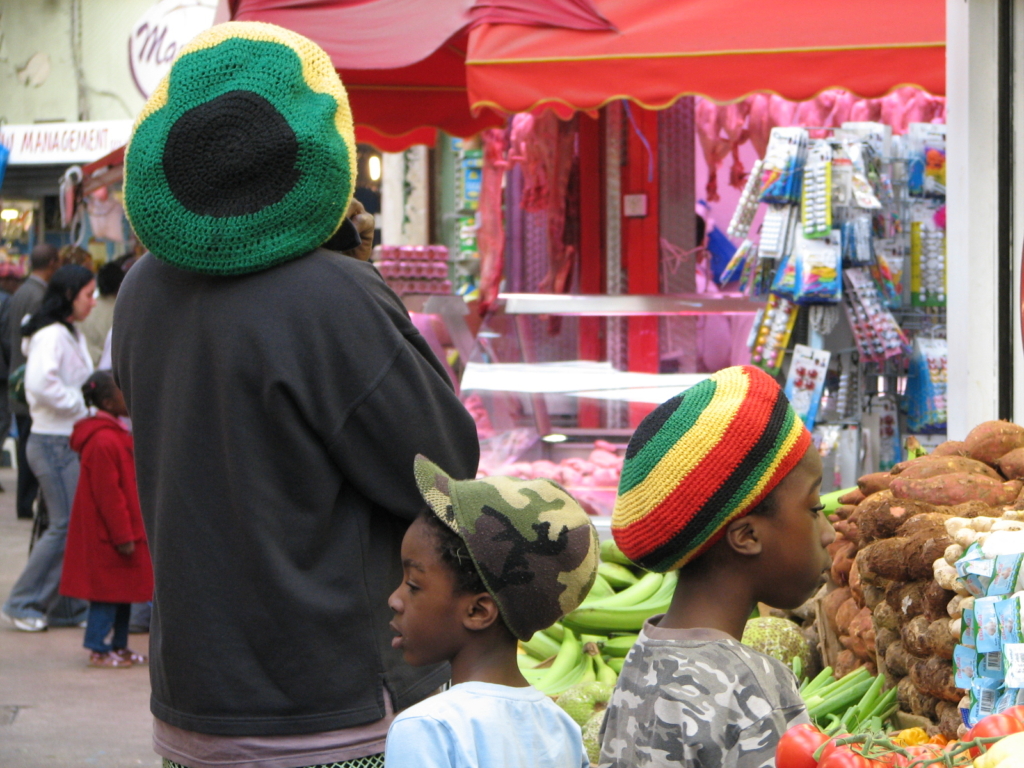
Multiple generations at Brixton Market. Credit: krembo1/Flickr (CC BY-NC 2.0 DEED) These issues have become even more acute with the roll-out of austerity policies in the wake of the financial crisis, with reduced welfare and the introduction of the so-called ‘Bedroom Tax’ – a particularly controversial policy that reduces benefits to social housing tenants deemed to have a surplus of bedrooms – hitting poor residents hardest. The London Voluntary and Service Council (LVSC) has highlighted how these changes severely impact inner London minority and disabled claimants, such as those living in Brixton, with the result that certain parts of London ‘will increasingly become “no go zones” for low-income people, a large proportion of them from BME backgrounds’. One local journalist has estimated that in Brixton over 700 households are being affected by the ‘bedroom tax’ and almost 6,000 households are now paying council tax for the first time, having previously been exempt because of low incomes.
All these factors are having an adverse impact on Brixton’s minority communities, with those most vulnerable facing debt, eviction and relocation elsewhere. In Brixton’s Coldharbour ward, one of the most deprived in London, wellbeing has deteriorated among residents, with a soup kitchen being set up to help feed those who are struggling. Research carried out by the local council highlights the concern among African-Caribbean residents about the availability of social and affordable housing, declining community infrastructure and exclusion due to gentrification.
However, there is growing awareness that something must be done to reverse this trend. For example, there have been calls to implement grants and loans to black Caribbean businesses to encourage their return. While financial support and other assistance will be a necessary part of this, it is also important that Brixton’s communities are themselves empowered to continue to play a central role in the development of their neighbourhood. In the words of Julie Fawcett, a tenant of a local estate and director of its community trust:
‘The fact that Brixton is a great place to live is a testament to those people … and now they’re being moved out…. This has always been a mixed community, and that’s what has made it a good place to live. [It] needs to be a place for everyone, and the balance is tipping.’
-
by Irene Fedorovych
The Ukrainian state has been slow to recognize the reality of hate crime in the country. Even now, there continues to be a clear gap between the small number of cases officially reported each year and the much larger number of incidents recorded by NGOs and rights groups. Furthermore, until recently, while Ukraine had legal provisions (Article 161 of the Criminal Code) criminalizing ethnic or religious hatred or hostility, this legislation was very difficult to apply. This was one of the reasons why many cases were not investigated properly and perpetrators were instead convicted for hooliganism or ‘plain’ crimes, without particular mention of hate crime or other aggravating circumstances. However, in 2009 the Criminal Code was amended, and in 2012 a new Criminal Code came into force. While civil society organizations were initially hopeful that this would help create a stronger framework for investigating and prosecuting hate crimes, in practice both police and the judiciary have shown little commitment to improving their work.
Ukraine’s inadequate response to hate crimes against migrants, African students and other foreigners has previously attracted international criticism. In September 2012, following the failure of authorities to prosecute the arson of Roma houses in 2001 as a hate crime, Ukraine lost a case in the European Court of Human Rights (in Fedorchenko and Lozenko v. Ukraine) and was condemned for its inaction in the ruling:
‘There is no evidence that the authorities have conducted any investigation into the possible racist motives of this crime.… The Court considers it unacceptable that in such circumstances an investigation, lasting over 11 years, did not give rise to any serious action with a view to identifying or prosecuting the perpetrators.’
Even more troubling than the failure of the authorities to punish the perpetrators of hate crime, however, is the prosecution of minority members who have themselves been victims of violence. While a number of cases have been documented, one of the most notorious instances is the case brought against Olaolu Femi, a Nigerian student who arrived in the country in 2007 to study medicine. On 5 November 2011, his life changed completely after he was subjected to an unprovoked assault by a local gang. In the ensuing moments, Femi defended himself and his friend against his attackers with a broken bottle. When police arrived shortly afterwards, however, it was not the assailants who were arrested but Femi himself, on charges of attempted murder.
The subsequent investigation and trial have been marked by numerous procedural flaws that reflect the continued imbalances in Ukraine’s judicial response. After spending 18 months in custody, Femi was released on bail in April 2013 only after the Ombudsman for Human Rights supported a petition from a number of civil society organizations in his support. A year later, despite these irregularities and insubstantial evidence against him, on 1 April 2014 Olaolu Femi received a suspended sentence of five years with a three-year probation period. The sentence attracted widespread criticism from rights groups, with Femi announcing that he would be challenging the verdict. However, the prosecution also announced its intention to appeal for a harsher sentence.
Americas
- 01
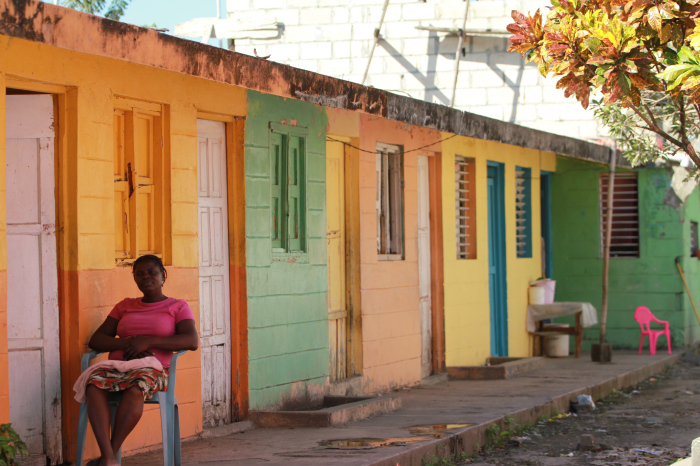
Introduction
by Marialuisa Ferro Afro-descendant communities have existed in the Americas for centuries, making up an important part of the continent’s demographic. Today, there are at least 150 million people of African descent in Latin America and the…
0 min read
- 02
The Garifuna’s battle to protect their land from urban development in Honduras’ ‘Banana Coast’
by Kara Chiuchiarelli Land rights are an ongoing struggle for Honduras’ Garifuna community, who for decades have faced forced eviction and the sale of titled communal lands as their territory has been appropriated for mining, oil extraction…
0 min read
- 03
The continued challenges of institutional discrimination for African-Americans
by Mariah Grant The death of Michael Brown, an unarmed 18-year-old African-American, shot by a white police officer in Ferguson, Missouri, on 9 August 2014, sparked protests and allegations of institutionalized racism in the country’s police…
0 min read
- 04
Using street theatre to tackle discrimination in the Dominican Republic
by Livia Saccardi ‘They do not accept us. In Haiti we are not Haitians. In the Dominican Republic we are not Dominicans. So where are we from?’ ‘She told me that my parents were foreigners, and she did not want to give me my…
0 min read
- 05
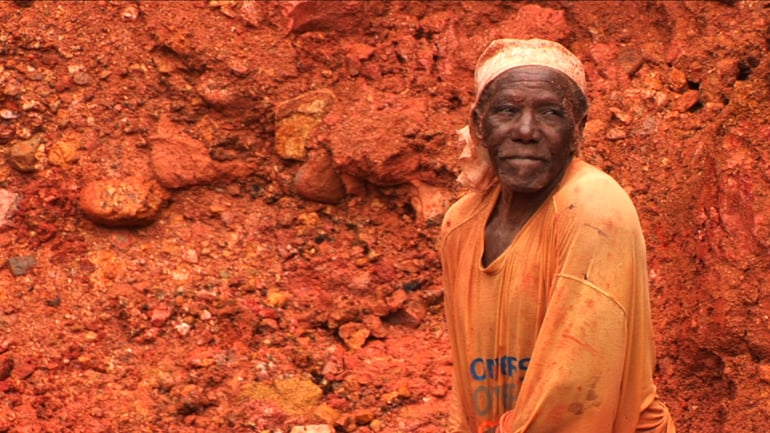
Afro-Colombian miners defending their heritage
A Minority Rights Group International production by acclaimed Colombian filmmaker Hollman Morris. Afro-Colombians have been carrying out small-scale mining in Colombia’s Cauca region since their ancestors settled there in 1637. Today their…
0 min read
-
by Marialuisa Ferro
Afro-descendant communities have existed in the Americas for centuries, making up an important part of the continent’s demographic. Today, there are at least 150 million people of African descent in Latin America and the Caribbean (Davies, J.D., ‘Latin America: Afro-Descendants’, in R. Green (ed.), State of the World’s Minorities and Indigenous Peoples 2006, London, MRG, December 2005, p. 71), with Afro-descendants especially prominent in Brazil, Colombia and Venezuela, as well as most Caribbean islands, where Afro-descendants in fact form a numerical majority of the population. However, Afro-descendants are still rarely represented in government and usually attain lower levels of human development. Afro-descendant communities also form a significant proportion of the population in North America, with more than 40 million citizens in the United States identified as black or African-American (United States Census Bureau, ‘Annual estimates of the resident population by sex, race, and Hispanic origin for the United States, states, and counties: April 1, 2010 to July 1, 2014: 2014 population estimates’, retrieved 1 October 2015).
Despite their large and long-standing presence, however, the socio-economic status of Afro-descendants is low and ethnic inequalities persist across the Americas, with Indigenous and Afro-descendant communities concentrated in the bottom strata of society. On a range of diverse indicators, Afro-descendants perform less well than whites or mestizos. The available indicators have demonstrated that profound inequality persists, even when factors such as social welfare have improved throughout the region. Women in the Afro-descendant community experience especially higher levels of discrimination based on gender and ethnicity, and tend to score lower on levels of economic and social rights attainment.
Integral to Afro-descendant identity and continued discrimination against Afro-descendants today is their history and ancestry. The vast majority derive from the tens of millions of Africans who were forcibly removed to provide slave labour for the mines and plantations that laid the basis for the wealth of the Americas. These ethnically biased slave labour enterprises were founded on the denial of the slave’s humanity and on their perceived hereditary ‘inferiority’. Though slavery was formally abolished in the nineteenth century, the current situation of Afro-descendants continues to be influenced by social attitudes and relationships developed during that early colonizing period.
Even though many countries, Brazil and the US often at the forefront, have adopted legal and institutional measures to combat ethnic discrimination towards Afro-descendants, access to justice remains poor and reports of police brutality are common. In the US today, more than a quarter of the black American population live below the poverty level, compared to less than a tenth of the white population. Across the Americas, Afro-descendant communities face similar social and economic inequalities, as well as barriers to political participation and other human rights.
Advocacy and political representation
In Latin America, many of the provisions made for Afro-descendants have come about under the recent rounds of multicultural citizenship reforms in the 1990s and 2000s. The World Conference Against Racism (WCAR) has also contributed to these measures, with governments either introducing or strengthening legal and institutional policies for Afro-descendants, notably in Brazil, Colombia, Honduras and Peru. Despite positive steps in the public sphere, political representation remains weak. Many Afro-descendants have overcome obstacles of racism and discrimination in order to run for political office, only to struggle to secure a solid electoral base due to entrenched racism among voters.
One of the main barriers to increased political representation of Afro-descendants is weak social consciousness and mobilization along ethnic lines. There is little to be gained for individuals who self-identify as Afro-descendant: in practice, while many acknowledge mixed ancestry, relatively few claim to be wholly Afro-descendant. In fact, strengthening the weakened sense of an Afro-descendant identity is an important prerequisite for other forms of socio-economic progress. This is particularly the case in countries where the discourse of ‘racial democracy’ is strongest. In Brazil, for instance, there is a common belief among proponents of this argument that, due to widespread inter-ethnic relationships and the relative lack of legal segregation compared to the United States, the country has largely avoided ethnic division.
Nevertheless, while this may appear progressive, this view overlooks Brazil’s deep-seated historic bias towards ‘blanqueamiento’ (whitening). Instead of being constructed on rigid ethnic lines, its social hierarchy is based on a fluid spectrum of colour, with black at the bottom and white at the top – a legacy of colonial times, when it was used by whites as a political tool to secure power by reducing the black population. Although a multicultural strategy was implemented in Brazil and across the continent in the 1980s and 1990s in order to reduce ethnic tensions, sharp inequalities remain: 78 per cent of Afro-Brazilians still live below the poverty line, for example, compared to 40 per cent of whites. However, even in the face of these obstacles, there still exist many groups fighting to combat and challenge the reality of ethnic discrimination. In Brazil, hundreds of black consciousness and civil rights organizations are actively at work today.
In Colombia, Afro-Colombian political consciousness is part of a strong culture of resistance on the part of people of African descent in the face of colonial oppression and ethnic discrimination. An example of this culture of political resistance can be traced back to the experience of the palenqueros, or the establishment of colonies of free Africans during slavery. Modern formal political organization by African descendants, based on ethnicity and the collective experience of discrimination, later evolved as a reaction to and inspired by the emergence of indigenous organizations.
In the 1980s, Afro-Uruguayans formed their own organizations to fight racism, such as Mundo Afro, which hosted a regional conference on xenophobia and racism in Montevideo in 1994. In recent years, an increasing number of grassroots organizations have emerged to promote the recovery of African culture. There are also many groups involved in local development projects in the poorer areas of Montevideo, some of which specifically focus on – and are even led by – Afro-Uruguayan women.
Many Afro-Bolivians adopted Aymara language and culture, and as a result the Afro-Bolivian Spanish dialect, as well as their music and dance, became less distinctive. However, this trend was reversed in the late twentieth century, with the revival of the Saya dance as part of a black consciousness movement. A number of groups formed in the 1990s, such as Movimiento Cultural Negro, formed in 1994, as well as Casa Afro-Boliviana in Santa Cruz and a Centre for Afro-Bolivian Development in La Paz. One of the most well-known groups is the Movimiento Saya Afro Boliviano, which aims to recuperate, strengthen and promote the values and cultural identity of Afro-Bolivians.
Indigenous peoples, however, have had greater advocacy and have dominated national and regional discourses on multicultural accommodation. The privileging of the indigenous is linked both to domestic and transnational discourses on indigenous identity, tied to culture and land and respected pre-colonial identities. While some Afro-descendant communities with indigenous affinities have been able to obtain specialized status and specifically land rights – one of the biggest legal issues Afro-descendants face today – in many cases the distinct culture and collective identity of Afro-descendants is not recognized.In North America, while African-Americans are a recognized ethnic constituency with high levels of organization and a strong sense of self-identification, the effects of decades of discrimination, exploitation and segregation continue to be felt in many ways – from lower educational outcomes and elevated levels of unemployment to limited political representation and higher rates of incarceration. Despite an active civil rights movement and well developed anti-discrimination legislation, inequalities for African-Americans persist.
Land rights and displacement
One of the major challenges that Afro-descendants continue to face in the Americas is the dispossession of their land. There have been numerous incidents of settlements and communities uprooted for development projects or other economic activities, such as mineral extraction, at times with the complicity or indifference of the authorities. While evictions have frequently been accompanied by intimidation and violence, including the use of paramilitary organizations to terrorize the local population, the secondary status and limited rights of Afro-descendants in many countries has also enabled these abuses.
In Colombia, in particular, Afro-descendant communities and collective territories are mostly concentrated in resource-rich and geopolitically strategic regions of the country that continue to be the scenes of fierce disputes between armed groups. Along the Pacific coast, the fight for the control and exploitation of collective lands by armed actors has meant that such communities have found themselves caught in the crossfire, or continuously on the front line of the conflict. At the same time, despite the passing of law 70 in 1993 granting collective land titles for black communities and their right to manage the resources within them, Afro-Colombian collective territories are increasingly threatened by the arbitrary implementation of economic development or mega-projects. These have been associated with brutal forced displacement, mass violence and targeted killings by both legal and illegal armed groups, usually at the behest of the government and international and private capital interests.
Afro-Colombian activists themselves claim that they are the victims of a slow process of ethnocide, fuelled by the simultaneous economic and physical aggression waged against them. They argue that mega-projects, such as those currently being implemented for the mass expansion of palm oil plantations, endanger the territorial basis for maintaining the unique Afro-Colombian culture and social structure which has developed over the last 500 years. Yet protests against land grabbing incidents are often minimal due to the often fatal backlash that follows. Francisco Hurtado, who was assassinated in 1998, was one of the first Afro-Colombian leaders to advocate that Afro-Colombians struggle to regain titles to the lands where their ancestors settled many centuries before. Since then, many other Afro-Colombian leaders with similar visions have also been assassinated.
Land rights issues are not confined to Latin America, however. North America also has a history of disregarding or denying the land rights of its Afro-descendant populations. In Canada in the 1960s, for example, the Halifax city authorities took over Africville and bulldozed the neighbourhood to build a bridge across the harbour. Africville was a small, close-knit community that had existed for 150 years and was populated almost entirely by black Nova Scotians. To this day, African Nova Scotian advocates still demand that Halifax settle land claims from the people who used to live in Africville.
Culture and heritage
Notwithstanding their long-standing marginalization, Afro-descendants have contributed immensely to the culture of most countries within North and South America. In Brazil, dance and musical traditions including Capoeira and Samba and much of the local cuisine, such as Acaraje and Mocqueca, were created by the Afro-Brazilian population. In terms of religion, Candomblé and its traditions, inherited from West Africa, are central to the lives of many Afro-Brazilians today. Religious leaders conduct their ceremonies in Yoruba and call upon spirits. Although Candomblé is still primarily associated with the Afro-Brazilian population, many other communities in Brazil now practise the religion and the rituals have been incorporated into the fabric of Brazilian national identity, such as the New Year’s Eve offerings to the ocean during Revellion.
In Mexico, African influence has been vital to the country’s music, usually mixed with Spanish and indigenous elements. For example, Mexico’s well-known Jarocho music, made famous through the song ‘La Bamba’, is of African origin. In Uruguay, similarly, the music, dance, art and writing of Afro-Uruguayans have played a major role in the evolution of national culture. African folklore is particularly prominent during the Carnival celebrations in Montevideo, and popular speech in the country has incorporated many words of African origin.
However, it is important to recognize that the celebration of Afro-descendant cultures can sometimes be exploitative in nature. In Cuba, for example, this has been a direct result of the increased marketing of Afro-Cuban culture as an exotic commodity for the Euro-oriented tourism industry. The apparent acceptance and celebration of Afr-descendant culture and heritage in countries can also belie the persistence of social stigmatization. In Brazil, for instance, Afro-descendant culture is one of the best-known features of its national culture – yet the community itself is still among the most marginalized in the country.
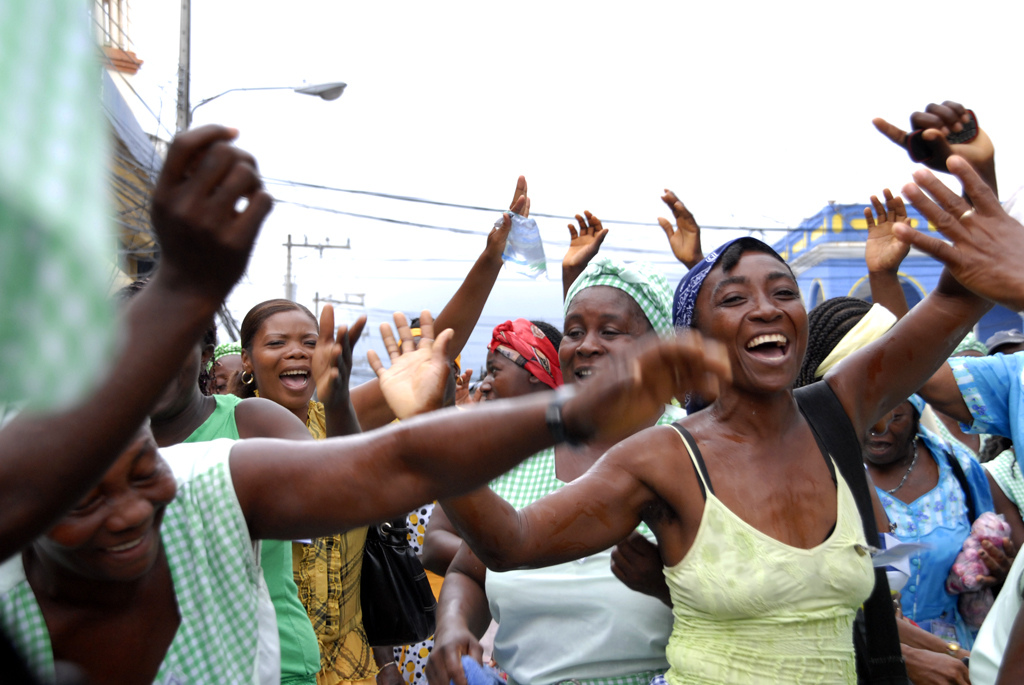
Garifuna people march to protest against land rights violations in La Ceiba, Honduras. Credit: Felipe Canova. -
by Kara Chiuchiarelli
Land rights are an ongoing struggle for Honduras’ Garifuna community, who for decades have faced forced eviction and the sale of titled communal lands as their territory has been appropriated for mining, oil extraction and palm oil cultivation. But communities are now being displaced to secure access to another resource – their pristine coastline. ‘There is now a process of expulsion of our people from Honduras,’ according to one local Garifuna community member. ‘From tourism to extraction megaprojects, the initiatives have been imposed without making the necessary consultations. “Model cities” are the latest forms of dispossession that affect us.’
In the early 2000s, the national Honduran government declared a plan to develop a resort in Trujillo, along the lines of Cancún in Mexico, despite the fact that those beaches had been granted as title lands to the Garifuna a century before. This plan has led Canadian developers to buy up land – including land titled to the Garifuna people – in Trujillo for vacation homes and a cruise ship port called ‘Banana Coast’, themed around what the developer has described as the ‘glory days’ of the region’s banana trade in the first half of the twentieth century. This was a period when foreign industries appropriated vast tracts of Honduras land and established considerable control over the area, with little regard for the wishes, traditions and cultures of the local people.
Now the community is having to defend its land against development plans by the Honduran government.
Today, tourism development seems likely to have similar effects. Efforts to urbanize Trujillo and its surrounding coastal communities threaten the Garifuna’s traditional lifestyle, cultural heritage and identity as a people. Though the unique value of Garifuna culture is widely recognized – in 2001, the UN Educational, Scientific and Cultural Organization (UNESCO) declared Garifuna culture one of nineteen Masterpieces of the Oral and Intangible Heritage of Humanity – the community is already struggling to preserve its rich heritage in the face of entrenched poverty and discrimination.
The community now faces a range of other challenges, including climate change, environmental vulnerability and HIV/AIDS. While Garifuna community members need greater access to employment and other opportunities, these are unlikely to be realized if development is simply imposed on their territory without their consultation or consent. In this context, empowering local Garifuna is an essential step in their fight to protect their ancestral territory from a form of urbanization that largely excludes them.
-
by Mariah Grant
The death of Michael Brown, an unarmed 18-year-old African-American, shot by a white police officer in Ferguson, Missouri, on 9 August 2014, sparked protests and allegations of institutionalized racism in the country’s police force. Although witness testimony is conflicting, Brown was described by some as holding his hands up while he was shot repeatedly. In the ensuing weeks, the streets of Ferguson were filled with demonstrators who believed that Brown’s death reflected widespread ethnic discrimination among law enforcement personnel. Though there were incidents of looting and arson of local businesses, the response by police was also criticized as excessive. Within a week a state of emergency was declared in the suburb and a midnight curfew was enforced.
The demonstrations and violence in Ferguson have led to ongoing discussions about ethnic profiling and the incidence of homicide by police while on duty in the United States. This is a particular problem in its cities, where ethnic minorities are often concentrated – in 22 of the country’s 100 largest urban areas, they now make up a majority of the population – as evidenced by statistics on police stops and street interrogations in New York City. Data collected by the New York Civil Liberties Union (NYCLU) since 2002 on the use of ‘stop-and-frisk’ by the New York Police Department (NYPD) shows that, of those individuals engaged by the NYPD officers, 54 per cent were African-American despite them making up just 25.5 per cent of the city’s population. Nearly 9 out of 10 of those targeted were completely innocent, a fact corroborated by the NYPD’s own reports.
Recent research, drawing on data between 2010 and 2012, has revealed that African-American young men and boys are 21 times more likely to be killed by on-duty police officers than their non-Latino white counterparts. In 2014, some of those killed were Akai Gurley, Ezell Ford and Rumain Brisbon. One of the most high-profile incidents was the killing of 43-year-old Eric Garner by an NYPD officer on 17 July in Staten Island, New York. The arrest and fatal choking of Garner, who was unarmed, were captured on video and quickly spread across the internet. In the video Garner can be heard pleading ‘I can’t breathe’ 11 times. This plea, along with the hashtag #BlackLivesMatter, soon became rallying cries of the anti-police brutality and equality movements in the United States. Popular outrage was further inflamed by grand jury rulings towards the end of the year that closed criminal proceedings against the officers involved in the Brown and Garner killings, triggering further protests in cities across the country.
One contributing factor to the tensions that arise in urban areas between minority communities and law enforcement agencies is the involvement of some members in violent crime, including gang membership. However, this occurs among the complexities of social, political and economic exclusion that fuel criminal behaviour – factors that are often overlooked in public discussions of urban violence within minority communities. The simplistic and discriminatory representation of these issues was reflected in comments by former New York City Mayor Rudy Giuliani, who stated in an interview in the wake of Ferguson that ‘93 per cent of blacks are killed by other blacks’. He argued that attention should be focused on reducing crime within African-American communities rather than the killing of Brown by a white police officer, which Giuliani regarded as ‘the significant exception’.
While Giuliani’s comments were criticized by many commentators as harmfully reductive and misleading, evidence suggests that crime affecting African-American communities is disproportionately high, with African-Americans being four times more likely to die from homicide compared to the national average. However, in addressing urban violence it is neither useful nor effective to reinforce the inaccurate notion that members of minority communities form the overwhelming majority of perpetrators. New research on gang membership is evidence of this. A joint report from the US Department of Justice (DoJ) and Department of Health and Human Services (DHHS) reveals that the use of law enforcement data creates incorrect perceptions about the ethnic make-up of gangs. The National Gang Center, which relies heavily on this dataset, reports that 84 per cent of gang members are from ethnic minorities. However, when these statistics are combined with self-reporting studies, the demographic of gang membership changes considerably. This is the case in the evaluation of the Gang Resistance Education Training (GREAT) programme, which indicates that nationally about 25 per cent of gang members are non-Latino whites. The report further notes that the factors driving gang membership should not be simplified in these terms: ‘most risk factors cut across… ethnic lines, including the negative consequences associated with poverty, immigration, discrimination and social isolation’.
For instance, decades of research has tried to determine the extent to which spatial segregation impacts on minorities in urban areas and issues such as educational attainment, social isolation, housing, poverty and health. In Chicago, a 2012 joint report from the Joint Center for Political and Economic Studies and the Center on Human Needs at Virginia Commonwealth University found that ethnic segregation in the city’s neighbourhoods caused as much as a 33-year difference in life expectancy between non-Latino white residents and certain minorities. However, other recent studies based in Chicago and elsewhere have suggested that African-American and other non-Latino minorities were more likely to report poorer health while living in predominantly non-Latino white neighbourhoods compared to those living in segregated minority neighbourhoods. One rationale given for this, substantiated by past studies, is that social isolation of minorities living within non-Latino white neighbourhoods leads to higher incidence of poor health.
Another issue that is especially acute within urban areas is educational inequality, with new evidence demonstrating continued school segregation, particularly within the country’s inner cities. A report from the Department of Education’s Office for Civil Rights from March 2014 identifies that African-Americans on average have less access to rigorous educational programmes and are more frequently taught by lower-paid teachers with less experience. Furthermore, African-American students are four times as likely as non-Latino white students to attend schools where one out five teachers do not meet all state teaching requirements. The same Department of Education report found that ethnic minorities are more likely to be suspended or expelled overall, and that African-American students are three times as likely to be suspended or expelled compared to their white peers. Though the reasons for the increasing segregation within the schooling system are diverse, there are clear indications that school zoning policies favour affluent neighbourhoods, leaving minority students from poor inner-city areas disadvantaged and forced to attend under-resourced schools. The movement towards privately funded charter schools is also exacerbating unequal access to quality education among the country’s youth.
Sub-standard education for poor students attending schools in less affluent neighbourhoods, as is the case for many minority children, has a lifetime effect on their future economic wellbeing. Furthermore, limited educational opportunities for minority students have been associated with a phenomenon known as the ‘school-to-prison pipeline’, particularly as the expansion of the presence of police officers inside schools has led to increased contact with the criminal justice system. Infractions that were previously dealt with by teachers and school administrators now lead to fines and even incarceration in juvenile facilities. This experience has long-term ramifications, as children and adolescents sent to juvenile facilities are 37 times more likely to be arrested again as adults. Students with criminal records are further marginalized in some school districts through the use of alternative schools, which segregate them from the general student population. The discrimination within the school system is borne out in their disproportionate incarceration rates in the country’s prisons, with African-Americans accounting for 41 per cent of those imprisoned though they make up just 13 per cent of the national population.
While stronger institutional safeguards and a steady process of rebuilding trust between African-American community members and the police force are urgently required, greater efforts must also be invested in tackling the root drivers of inequality, alienation and disenfranchisement that have perpetuated violence and social exclusion in American cities. Only by recognizing and addressing the disparities experienced by many African-Americans in education, employment, housing and other areas will the long-term situation of the community be improved.
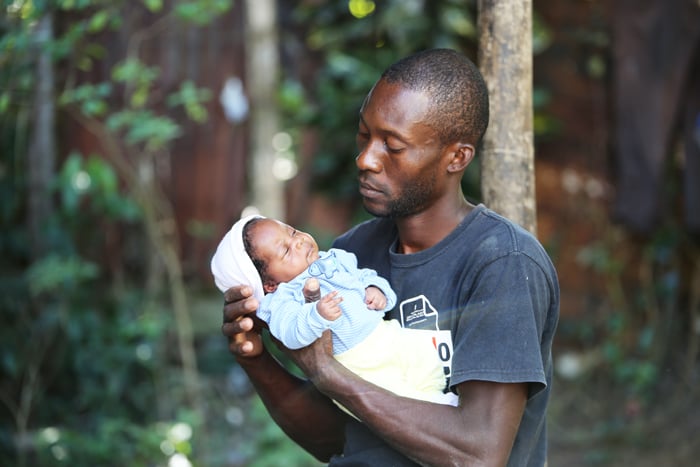
Dominican-Haitian man with baby in the Dominican Republic. Credit: MRG. -
by Livia Saccardi
‘They do not accept us. In Haiti we are not Haitians. In the Dominican Republic we are not Dominicans. So where are we from?’
‘She told me that my parents were foreigners, and she did not want to give me my papers. After one week I went back there and I told her that my parents are not foreigners and that if she is a Dominican, then so are my parents.’
This is what two young women in the Dominican Republic, both members of the country’s Haitian minority, said when interviewed for the documentary film Say My Name. Dominico-Haitians represent a substantial minority of up to a million people and form a distinct ethnic group. But although many Dominicans have Haitian ancestors and connections, anti-Haitian xenophobia is rife – and the state, despite their considerable contributions to the country, still considers them ‘in transit’. Yet only a few government officials acknowledge the existence of this prejudice: in general, authorities claim there is no discrimination.
In this challenging context, beginning in 2010, MRG partnered with a local organization, Movimiento de Mujeres Dominico Haitiana (MUDHA), to challenge commonly held racist attitudes and stereotypes through drama and theatre. This provided an opportunity to engage ordinary members of the majority community in debates about diversity, difference, discrimination, equality and justice. MUDHA, having recruited a theatre troupe with a mix of Dominico-Haitian and Dominican actors, then developed the focus of the play through research. This involved spending time with the minority community – talking with different community members, cleaning a local children’s playing area, organizing baseball games – to identify the main challenges for the Dominico-Haitian population. Through this approach, it became clear that the main obstacle confronting them was the absence of official recognition, citizenship and identity documentation.
Their situation was then dramatized in their play to allow the actors to express these issues vividly to a wider audience. ‘The programme defied racism. It allowed Haitian people to say in public “I am here. I am like this …”’, said one community member working with MUDHA. Through engaging storylines, mixing humour and tragedy, the performance communicated the discrimination that young minority members had experienced to a wider audience. Though the group faced some challenges, especially in engaging the majority population, the final results greatly exceeded the original targets. Street theatre enabled MUDHA to reach out to new audiences and draw them in emotionally with the story. Rosa Lidia Yan, one of the actors, says:
‘We are trying to raise awareness in our own community and the general public. In our play we are expressing our difficulties in getting identity papers and difficulties with discrimination.… The theatre is a help, it gives support to people, supporting those that have problems with their documentation not to give up their fight, to continue defending their rights. Because if we do not defend our rights, nobody else will do it!’
This was echoed by Sirana Dolis, acting head of MUDHA, who said:
‘We know that the fight will be long and maybe I will not see it [the end] but my grandchildren and great-grandchildren here in the Dominican Republic, they can say their grandmother fought for this.’
-
A Minority Rights Group International production by acclaimed Colombian filmmaker Hollman Morris.
Afro-Colombians have been carrying out small-scale mining in Colombia’s Cauca region since their ancestors settled there in 1637. Today their descendants continue to chip away at the red rock in search of gold, seeing it not only as a means for earning a modest living, but also as an activity deeply linked to their culture. Between 2002 and 2010, Colombia’s government gave out 7,500 mining exploration titles to national and foreign companies eager to exploit the country’s precious resources. In the film we hear of the Afro-Colombian community of La Toma’s brave, and sometimes deadly, struggle to prevent the invasion of mining companies and defend their ancestral livelihoods at all costs.
This film was funded by the European Union. This content is the sole responsibility of Minority Rights Group International and can under no circumstances be regarded as reflecting the position of the European Union.
This story pack marks The International Decade for People of African Descent, officially launched by the United Nations General Assembly in 2015.
